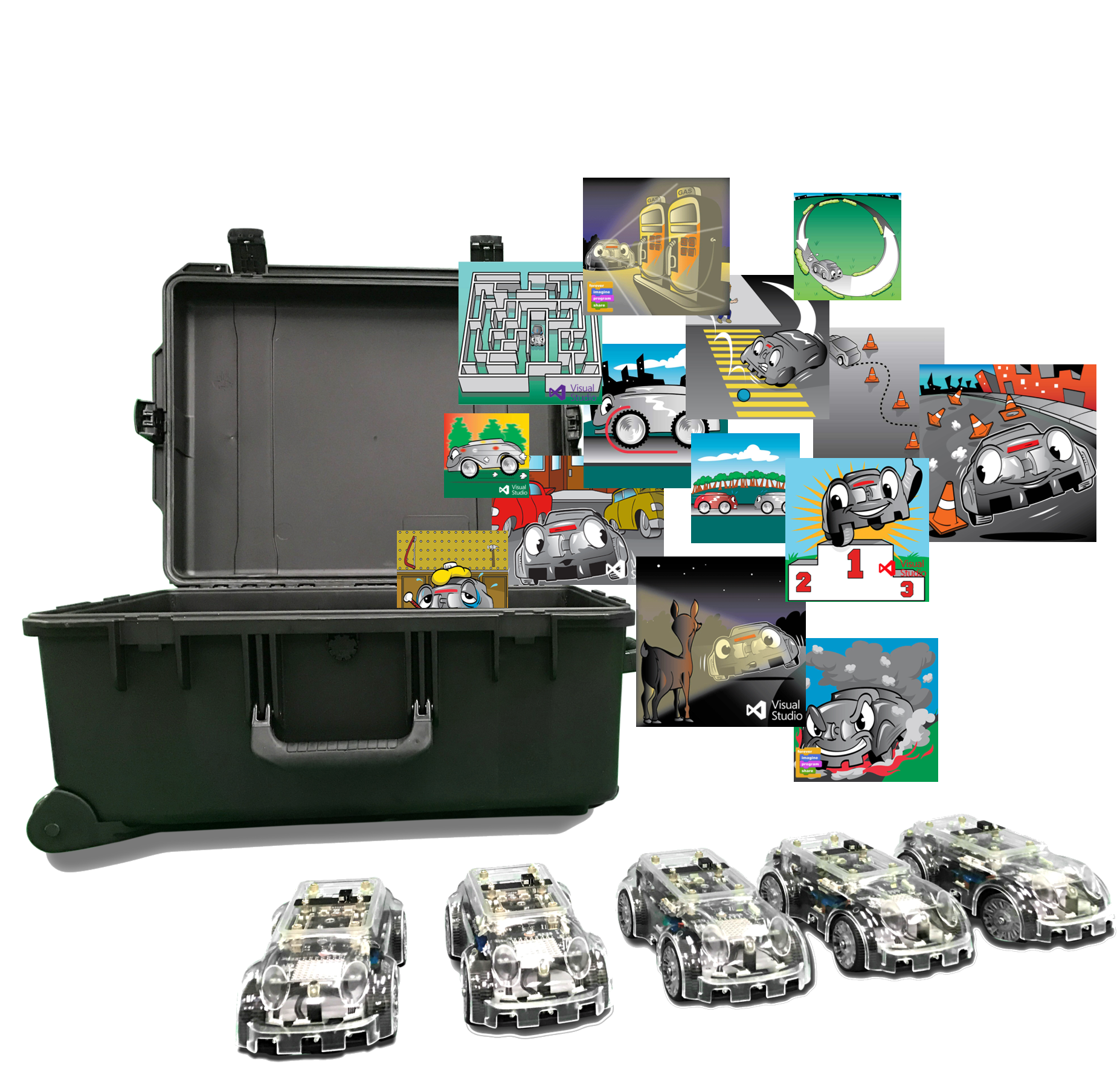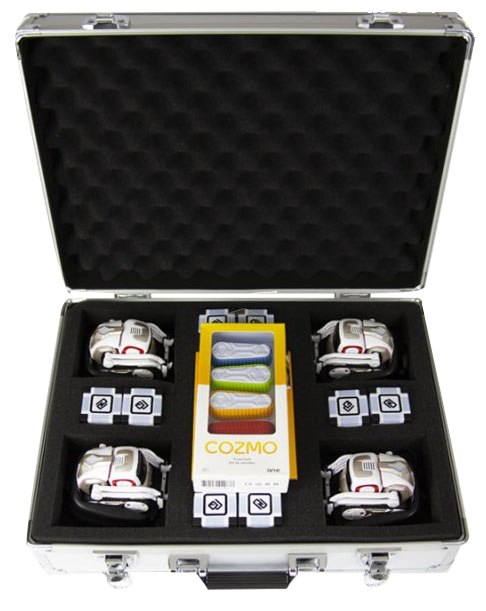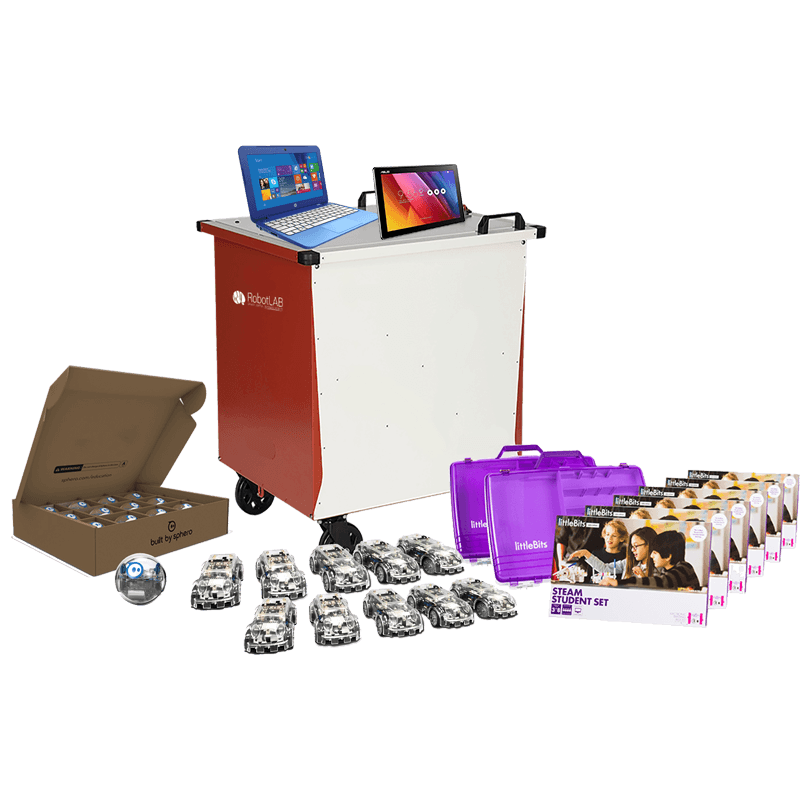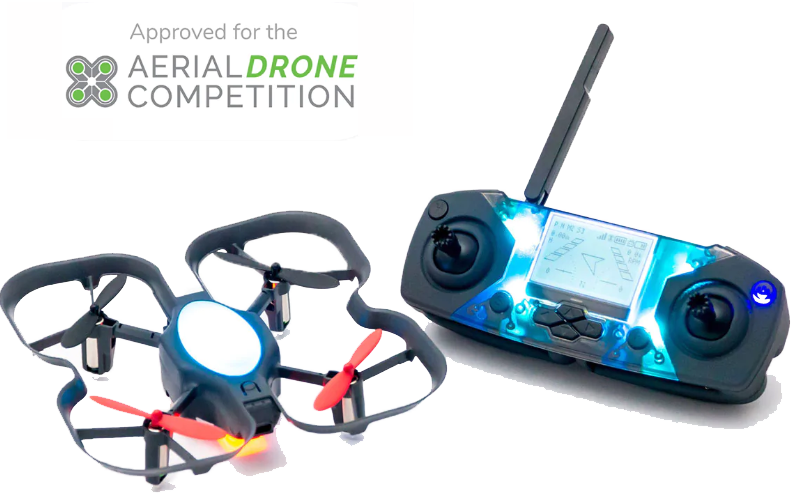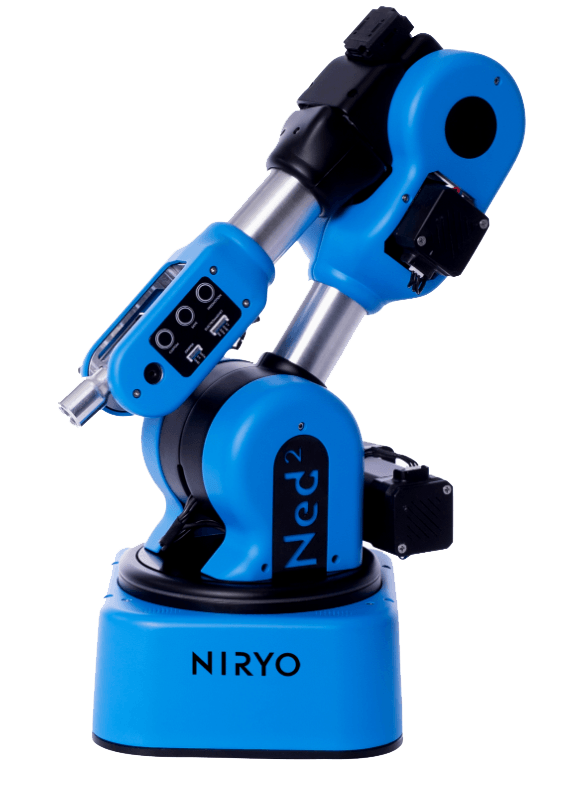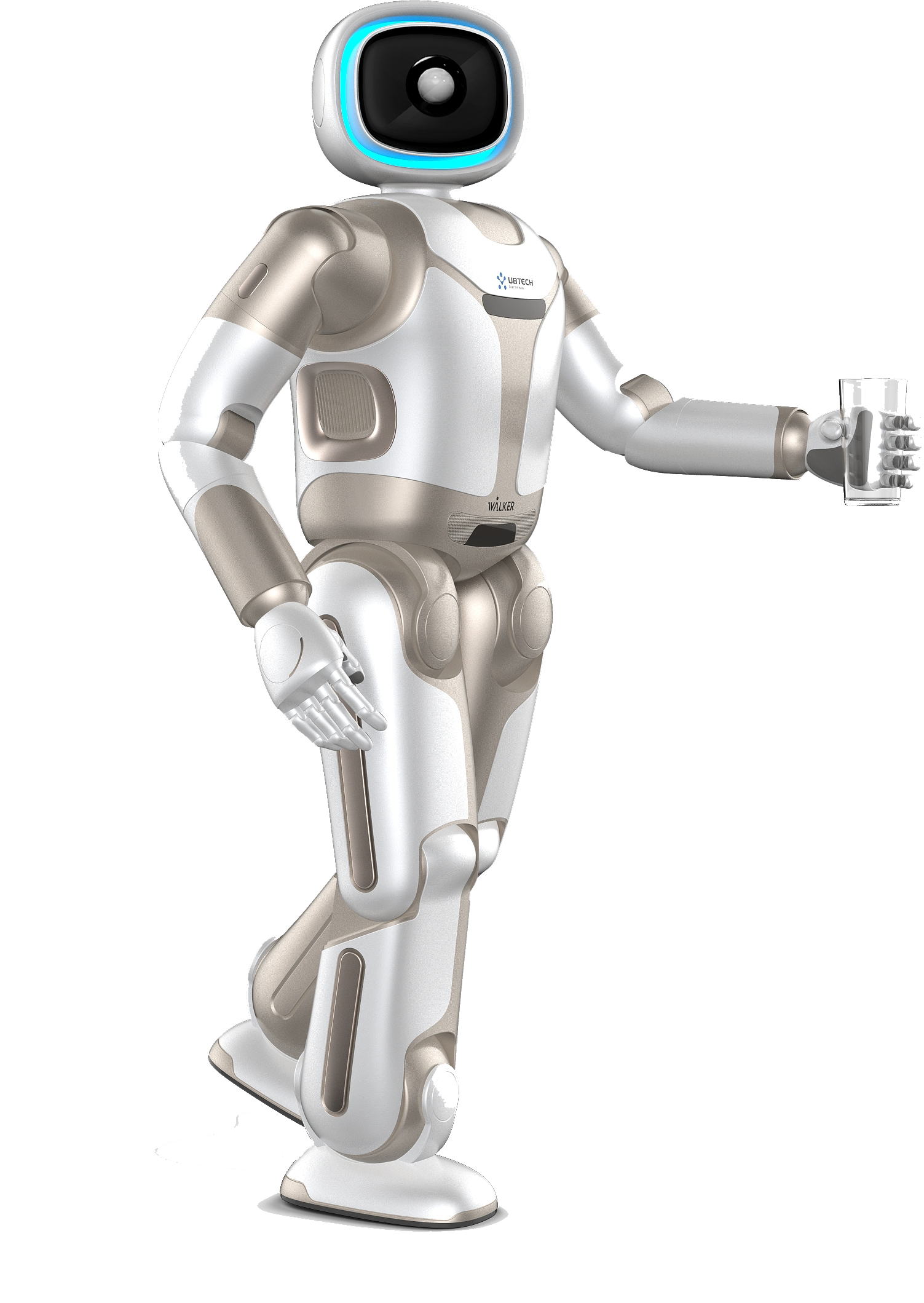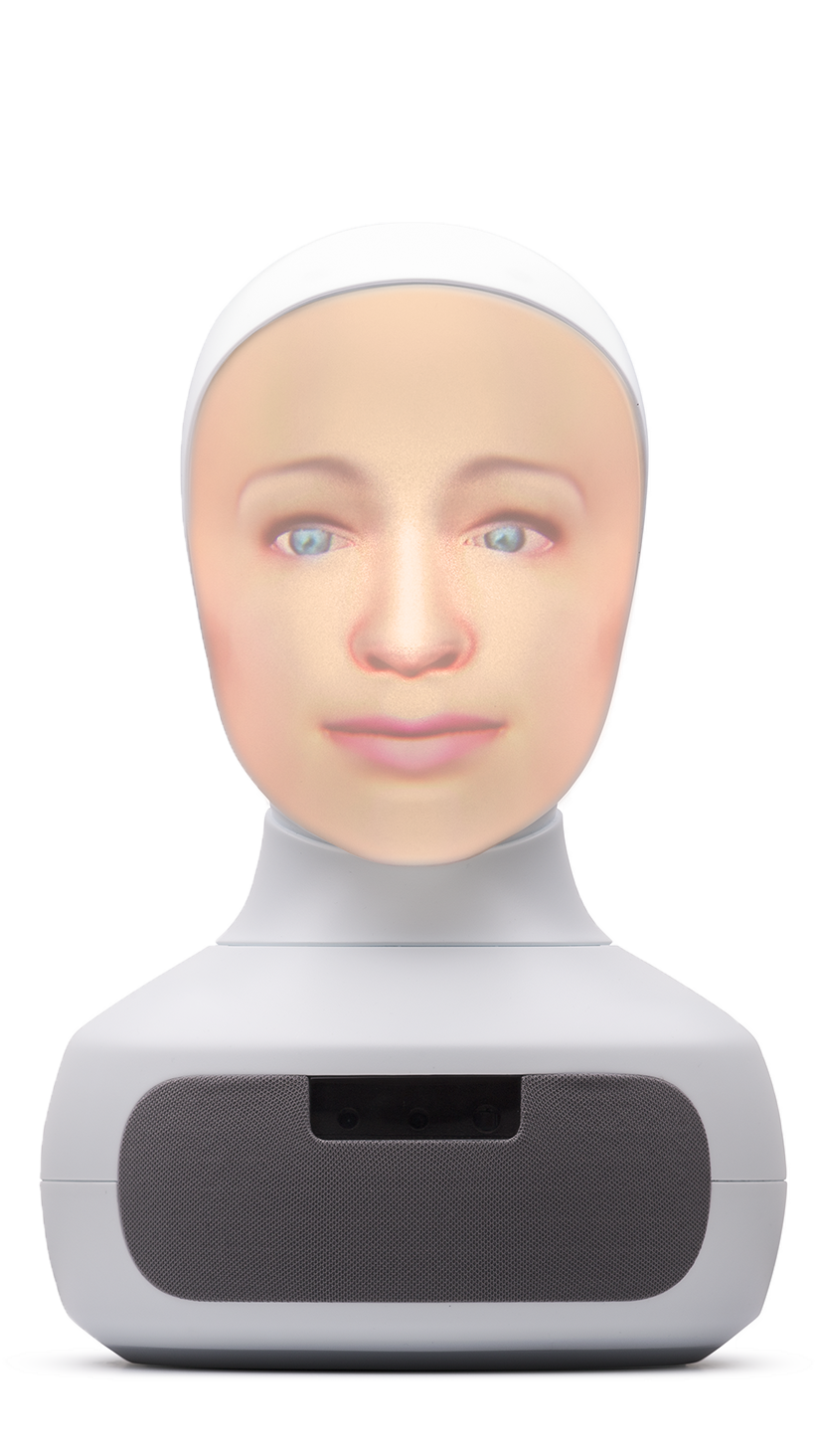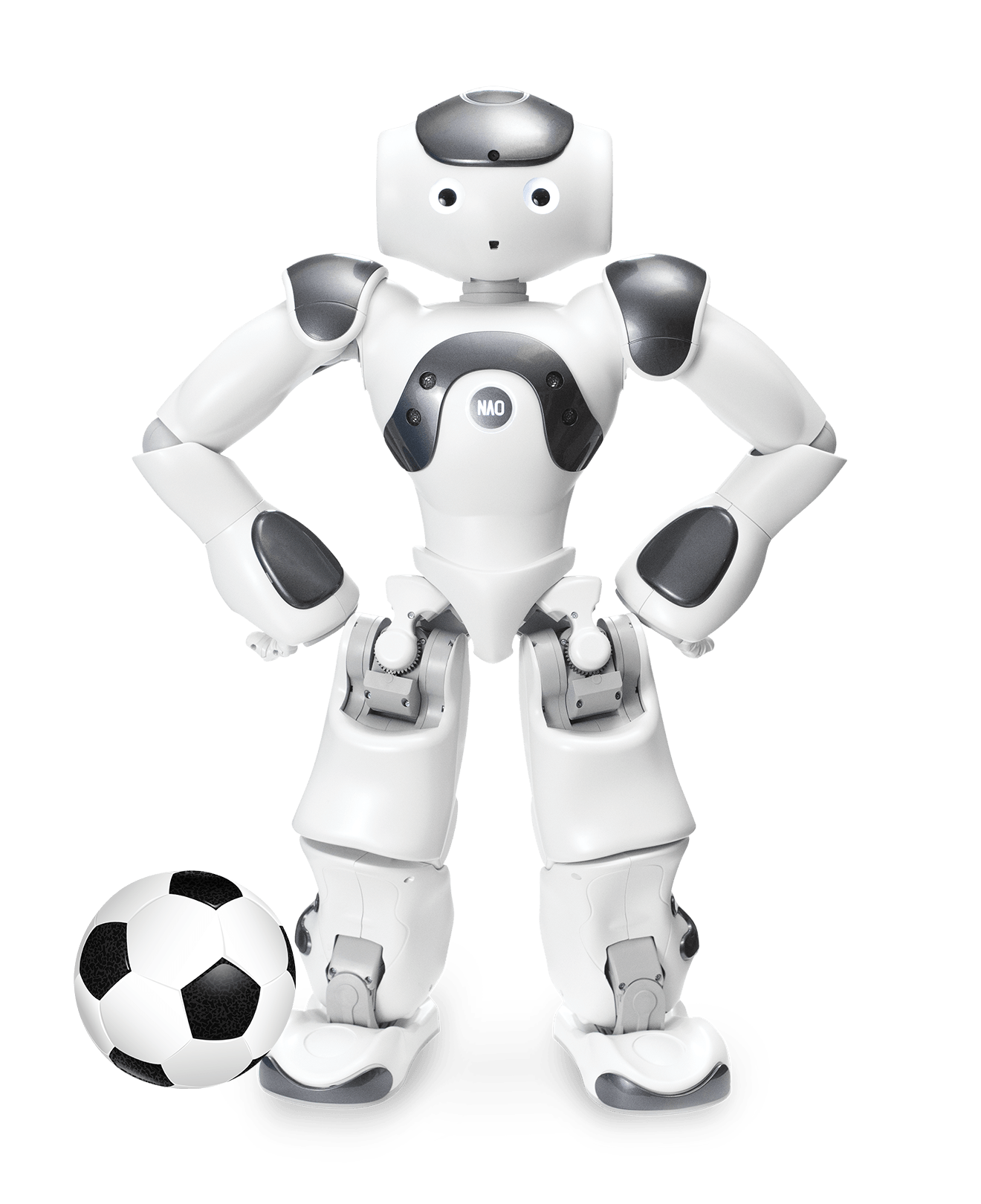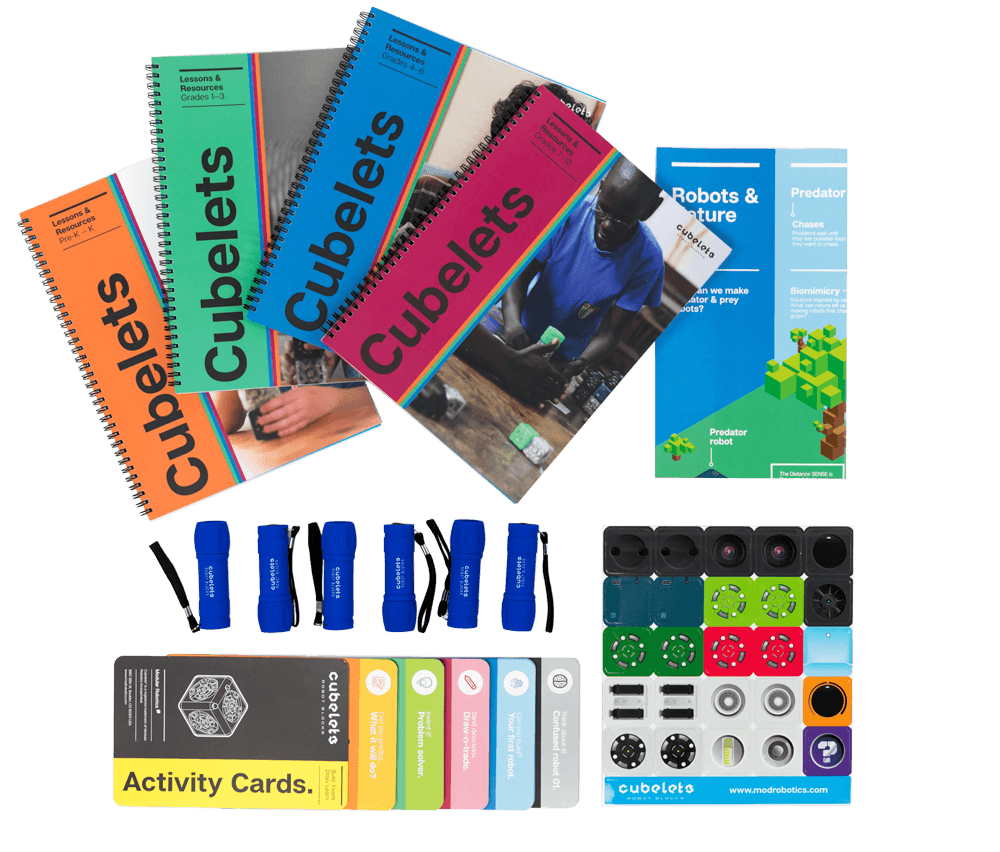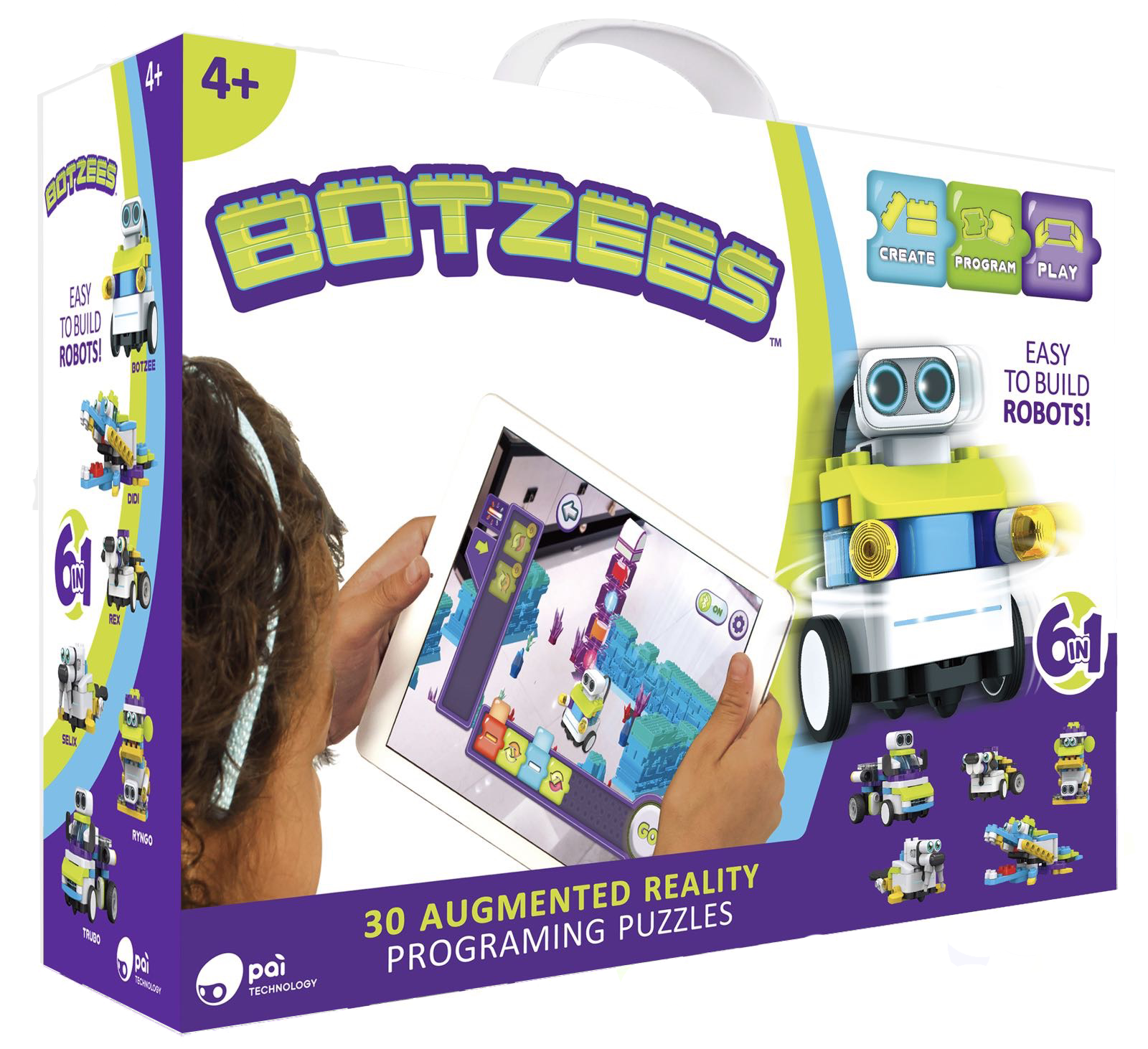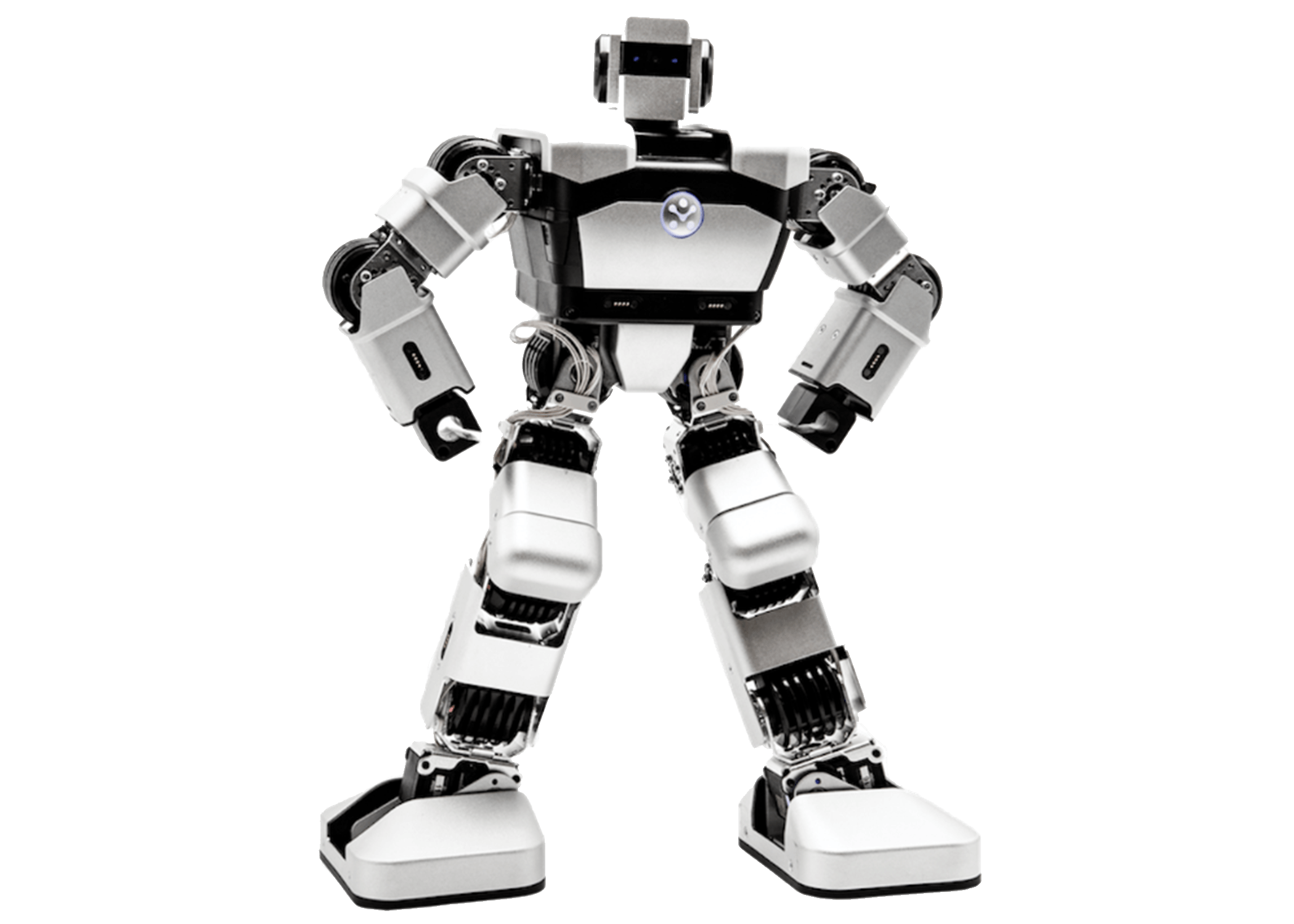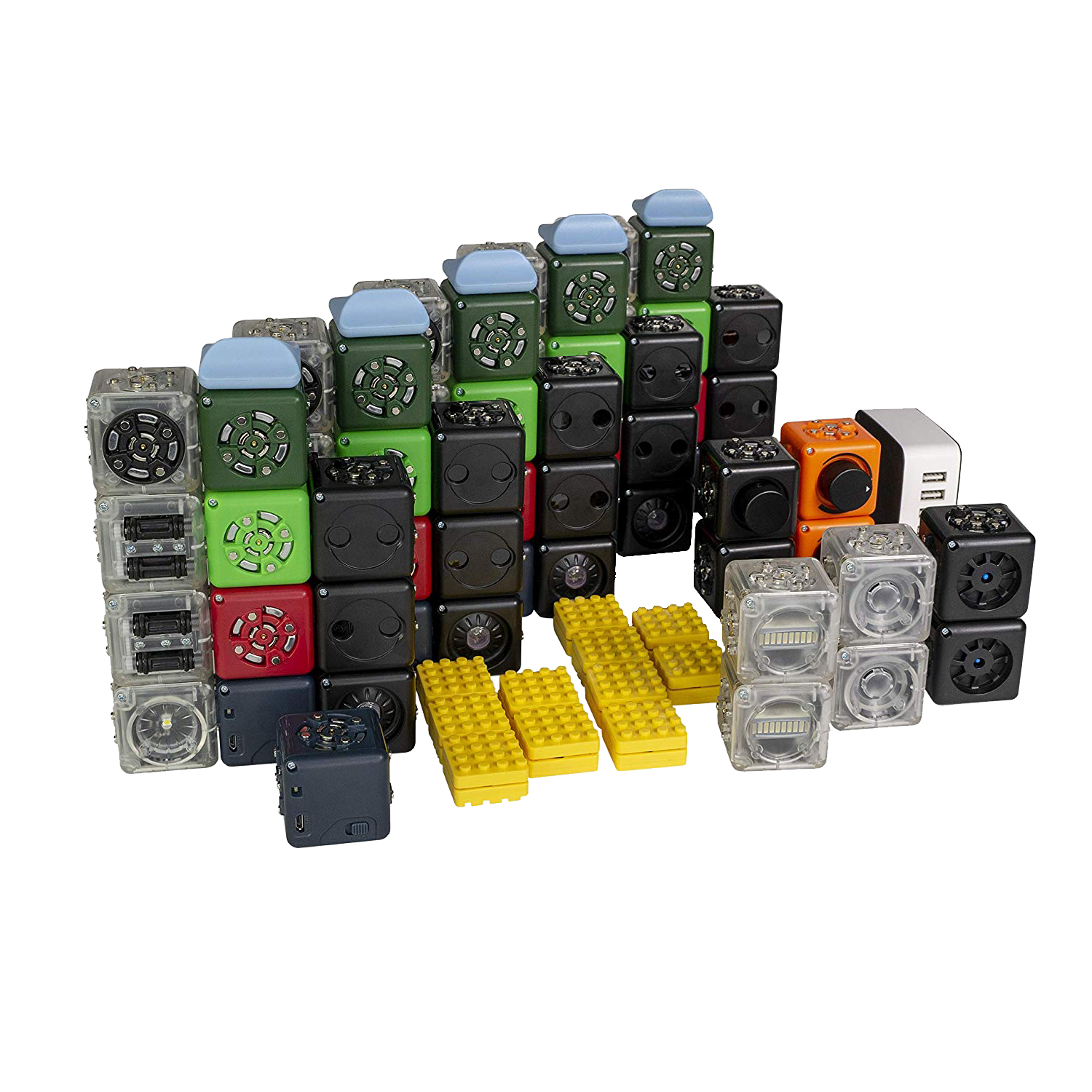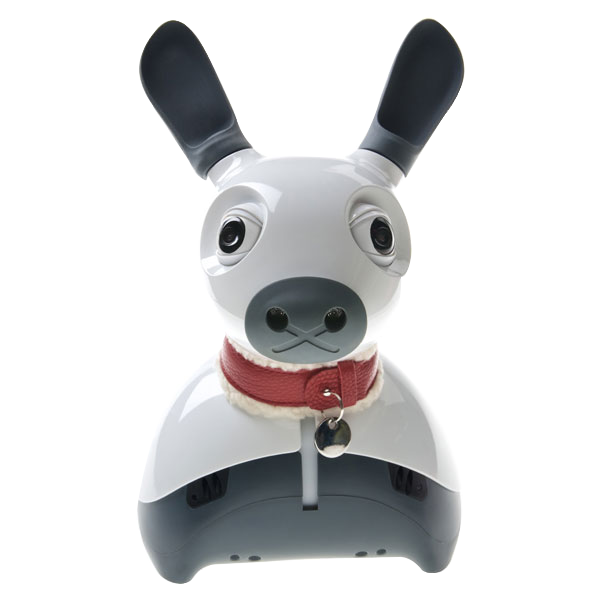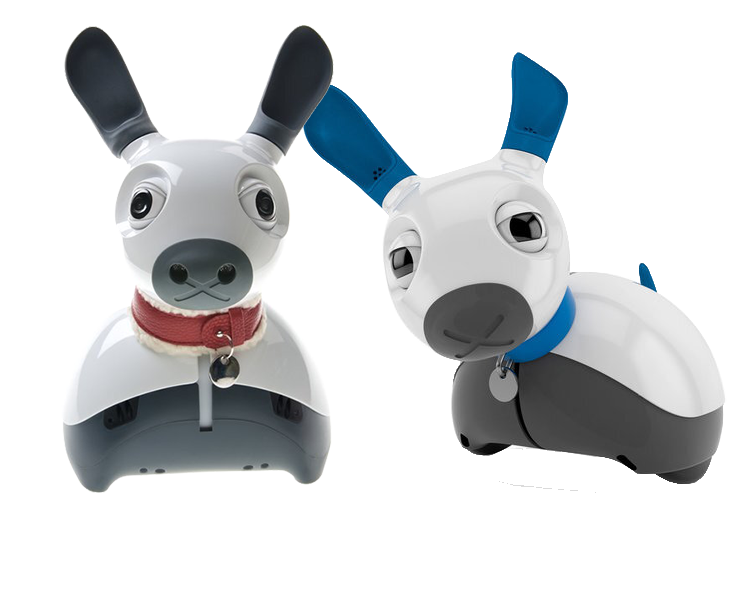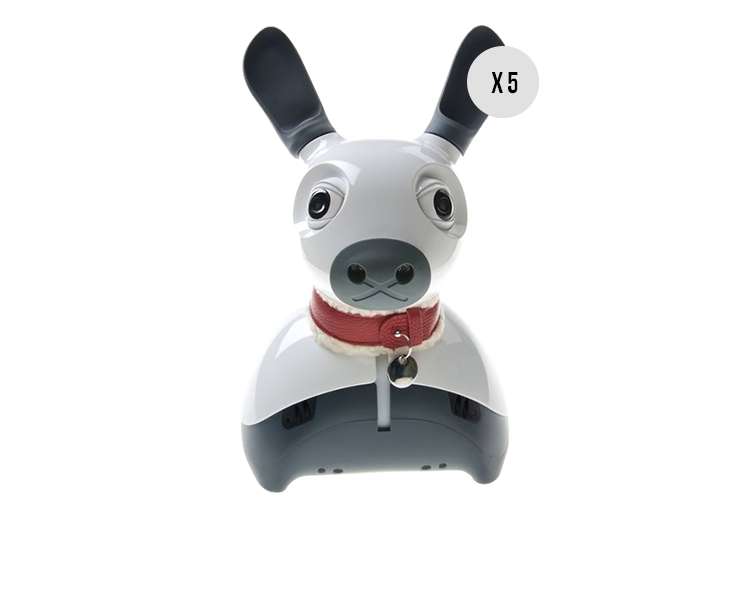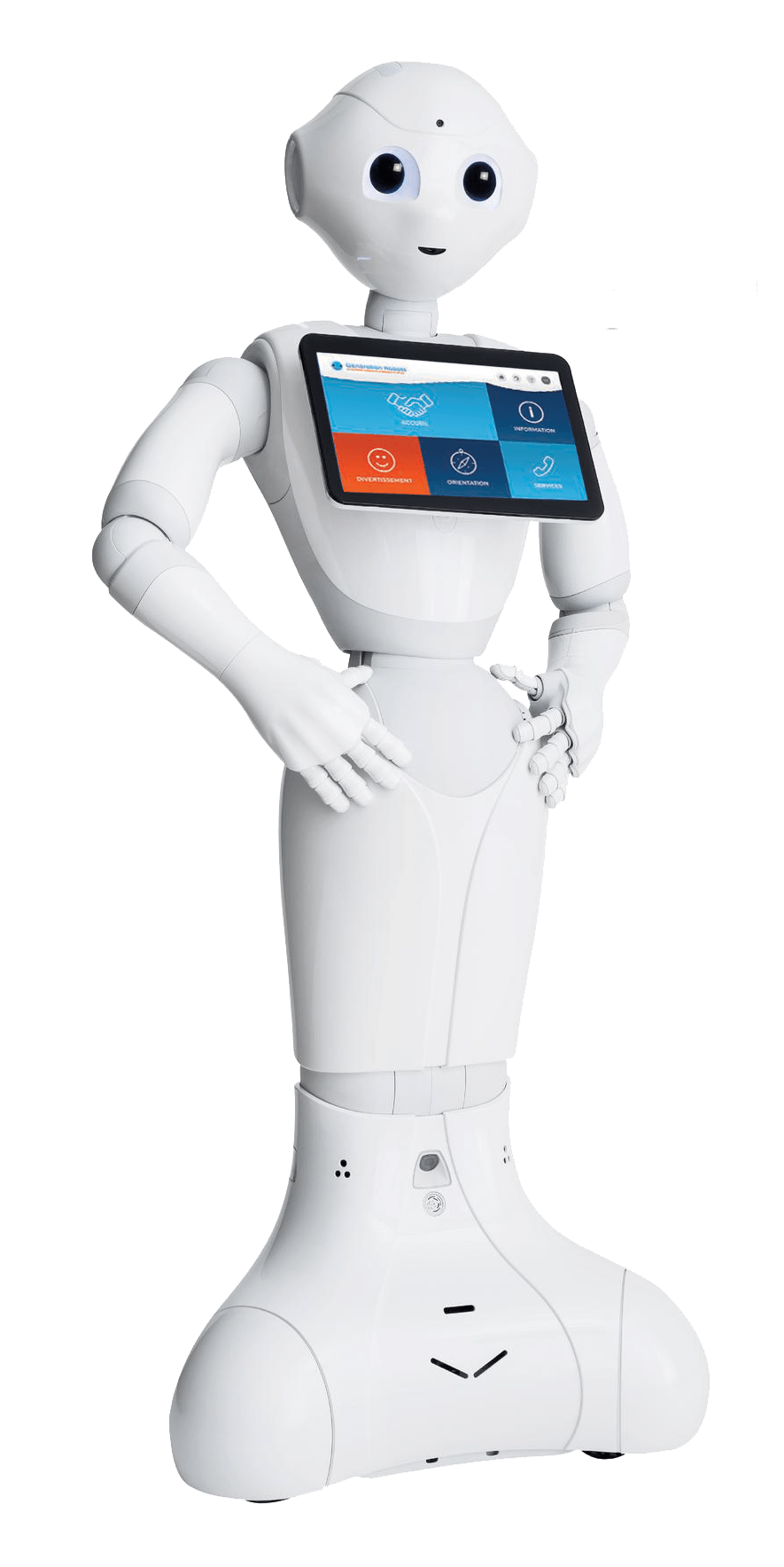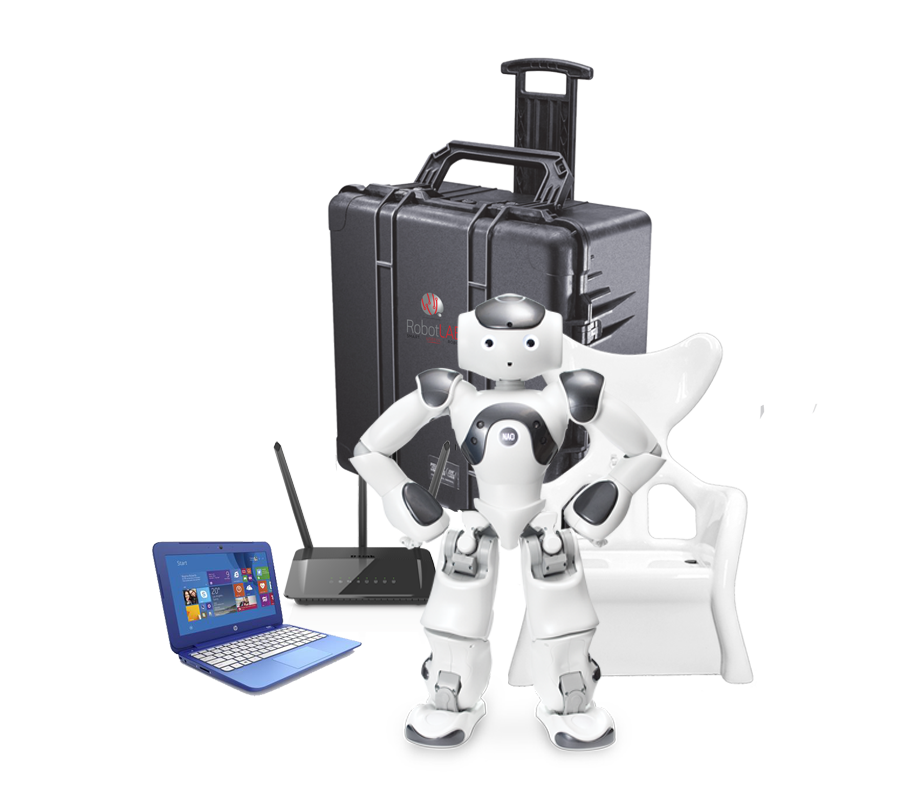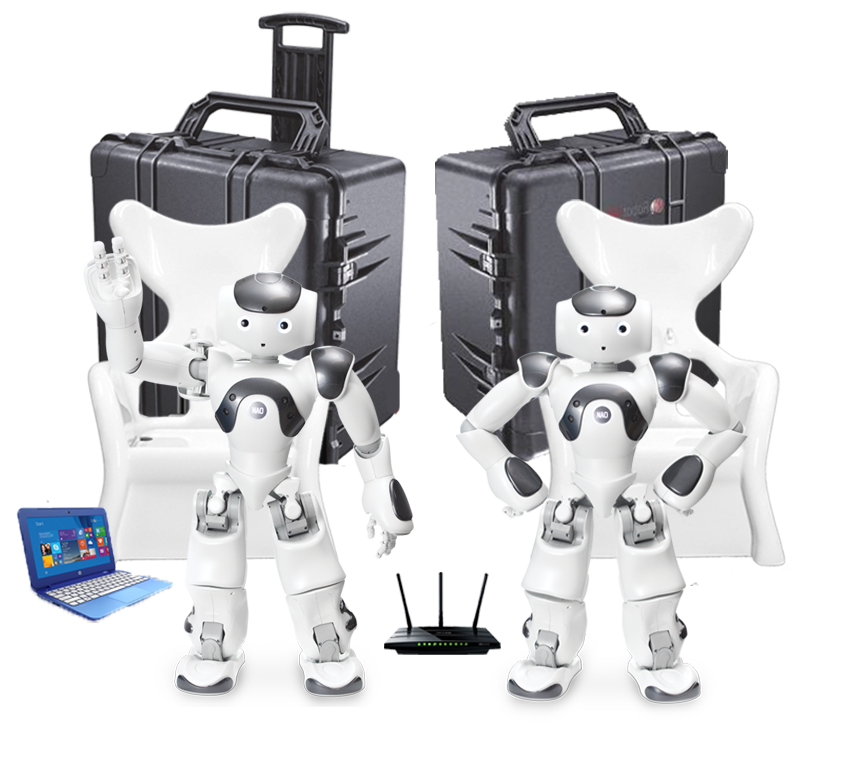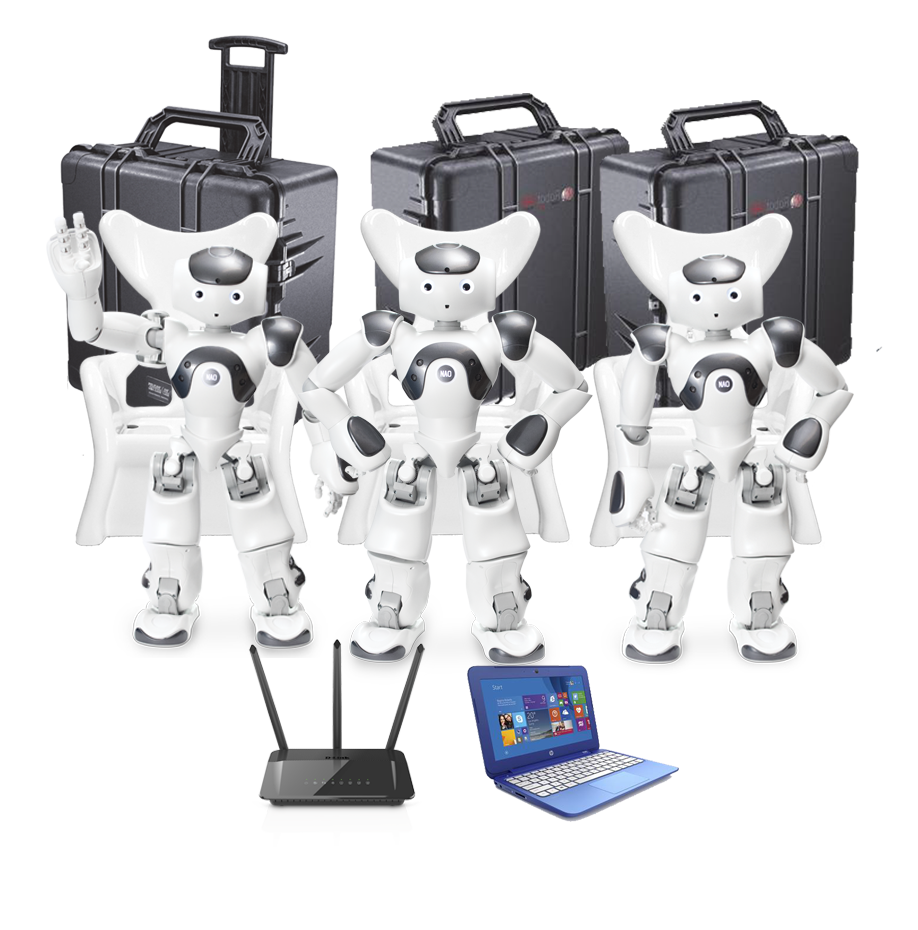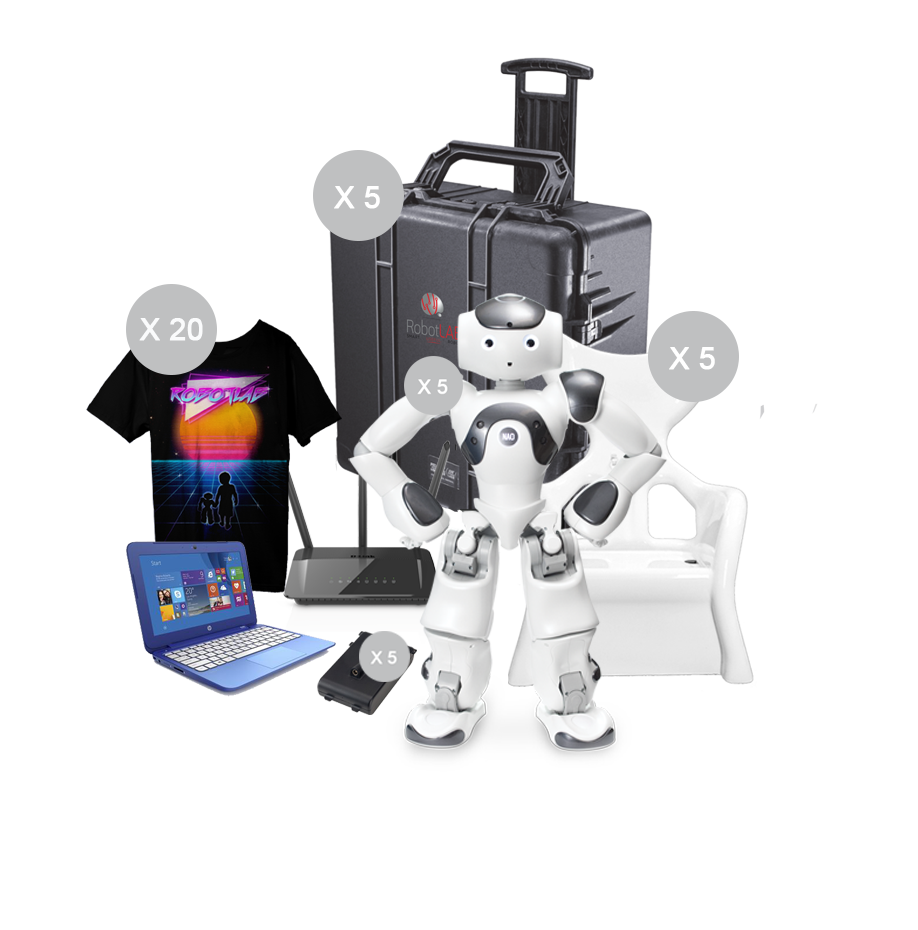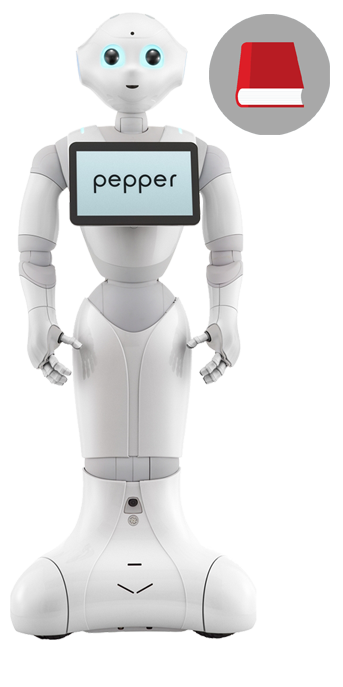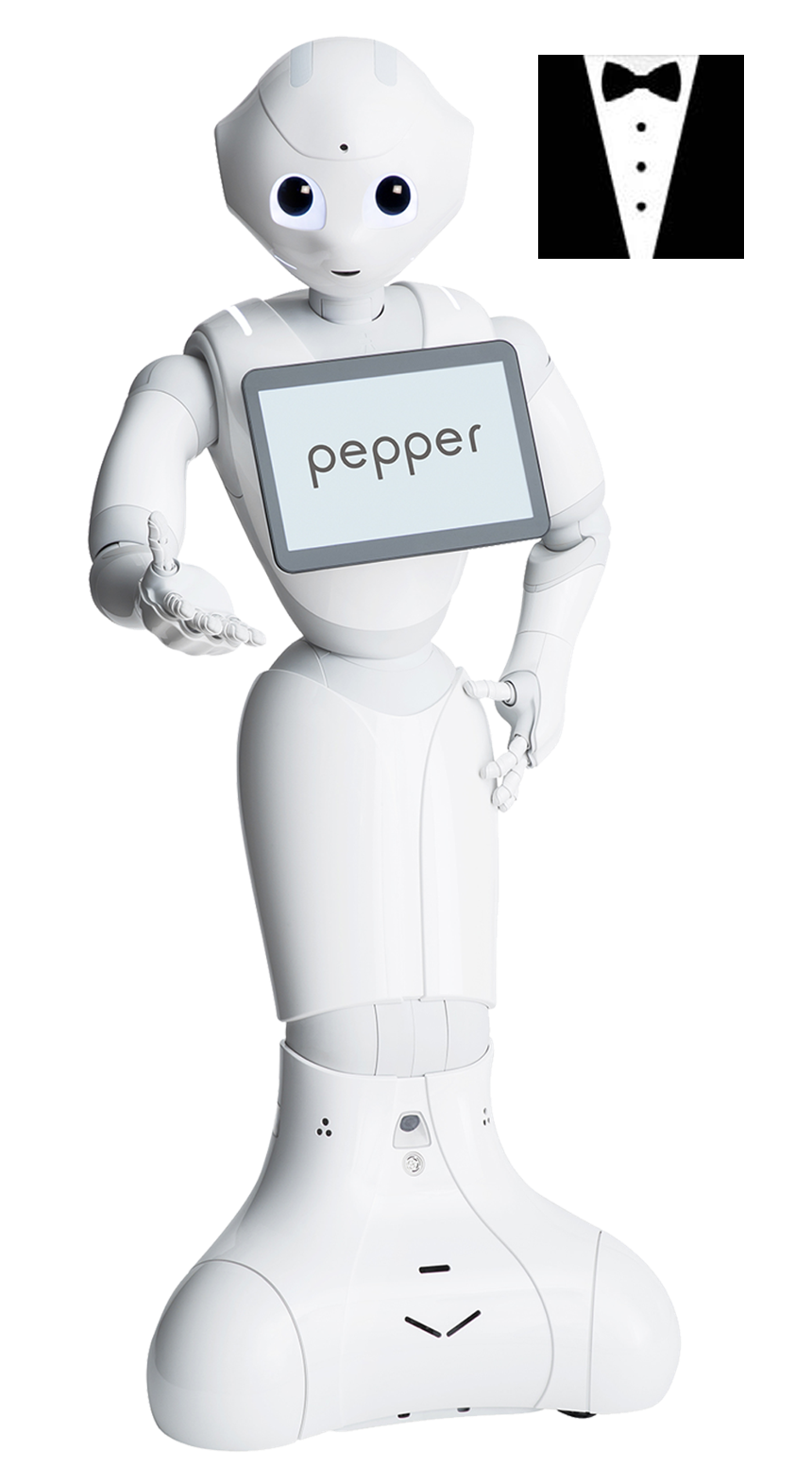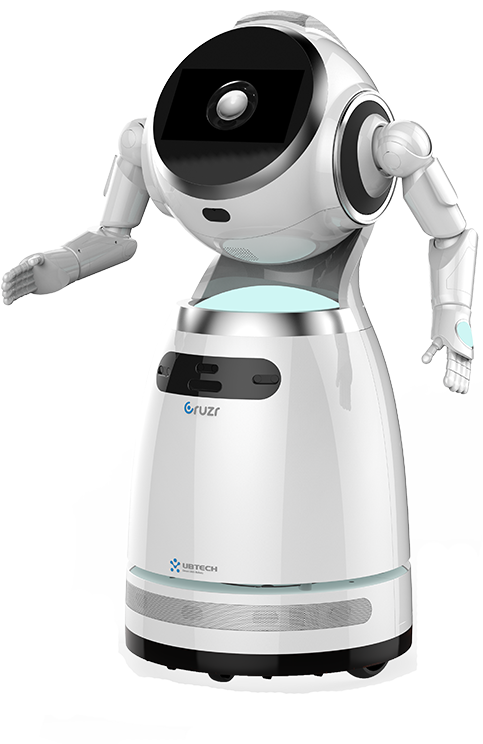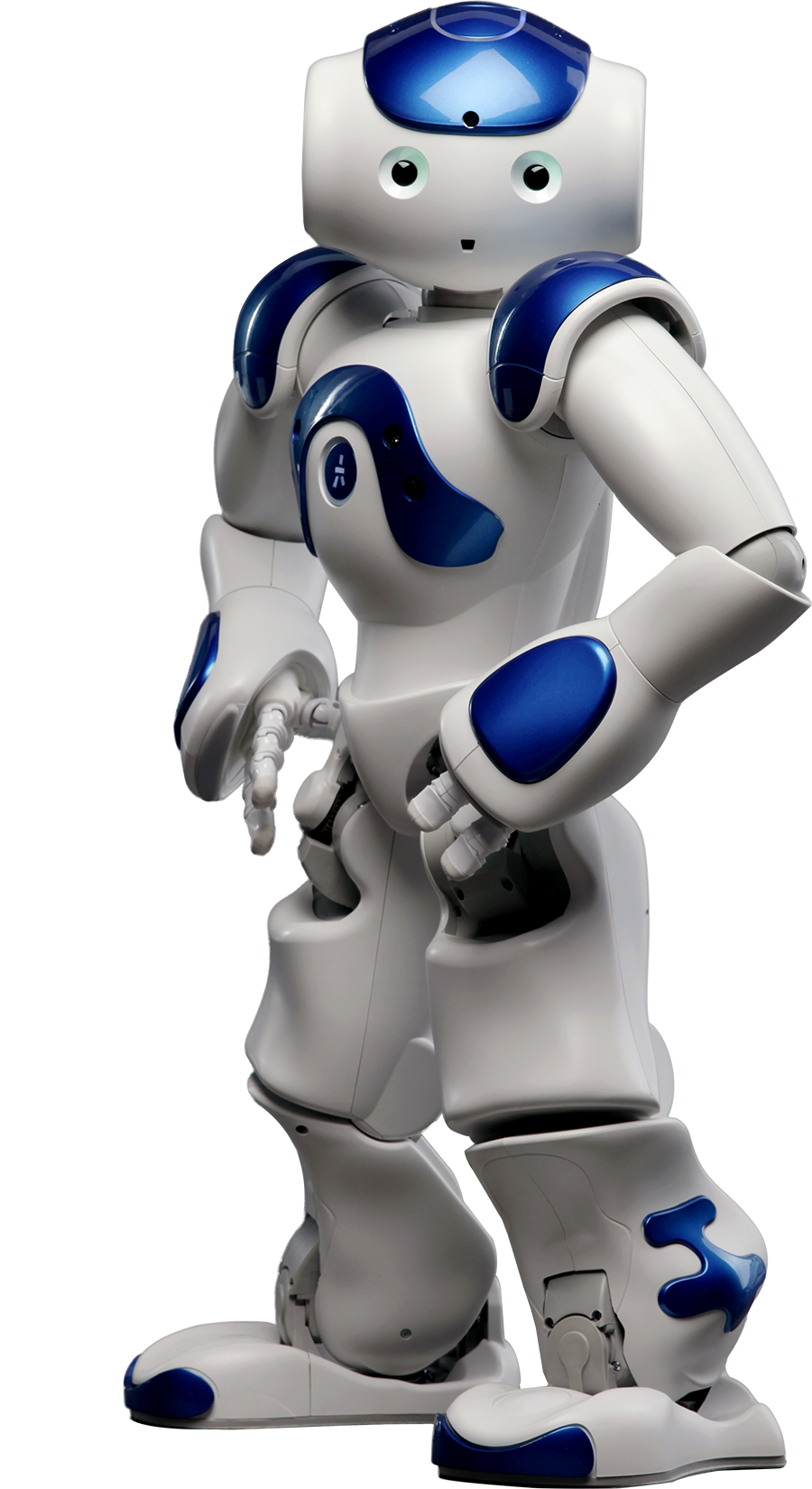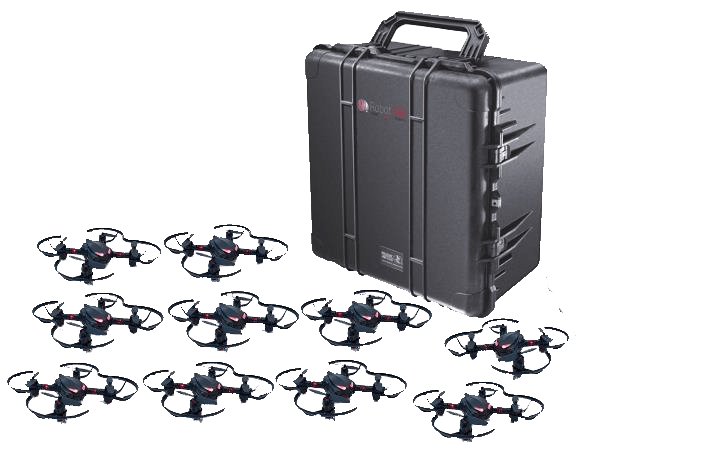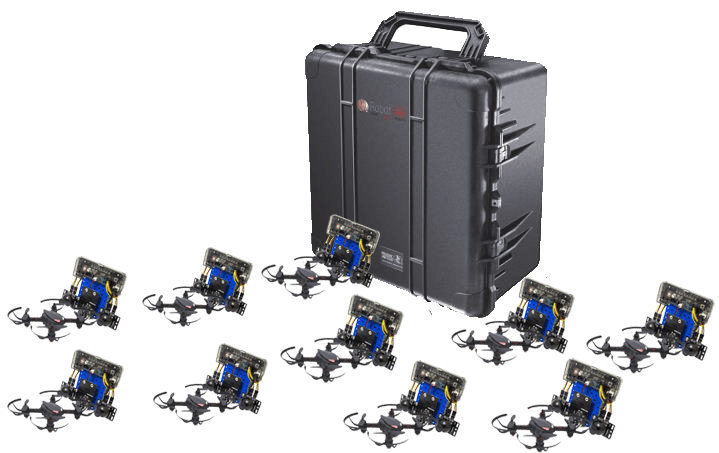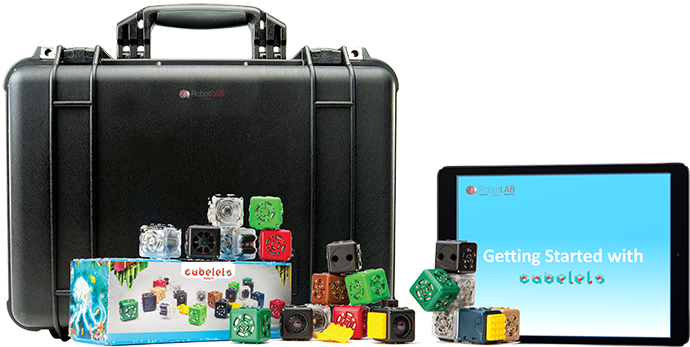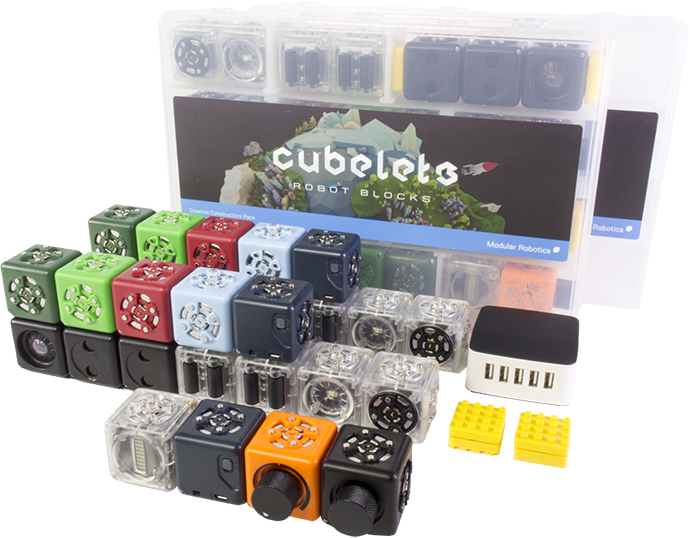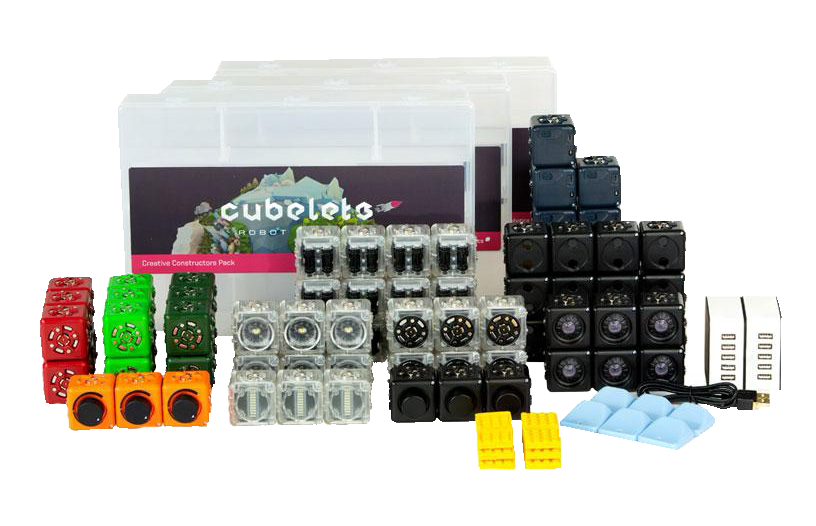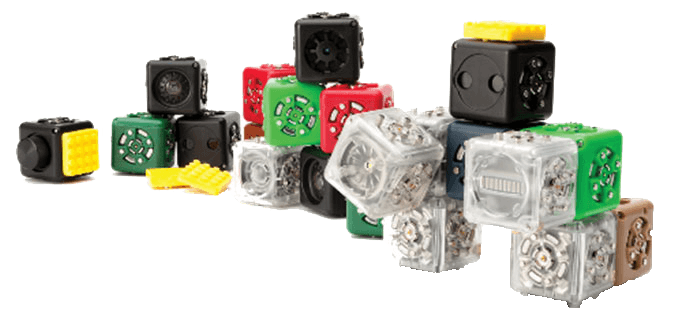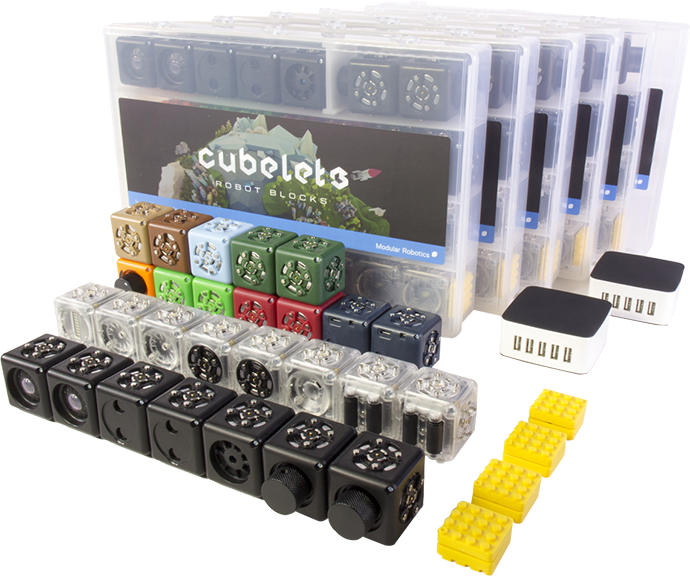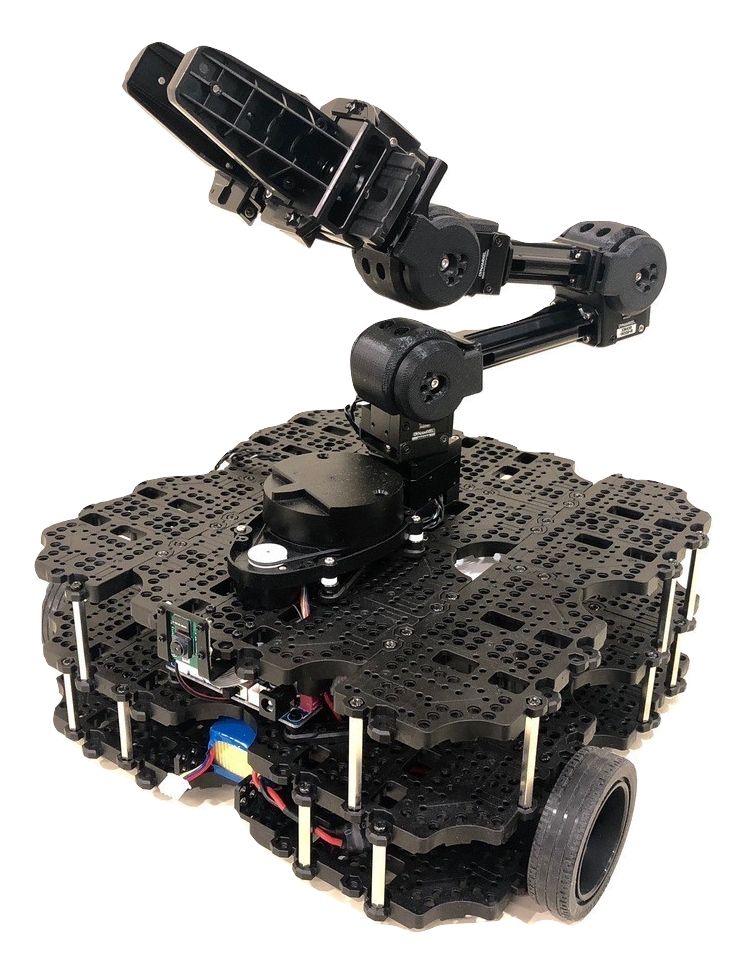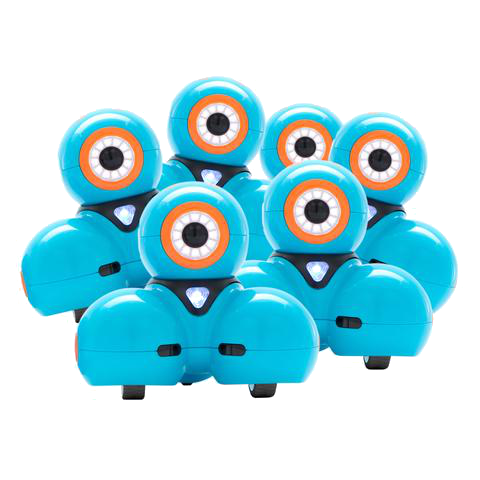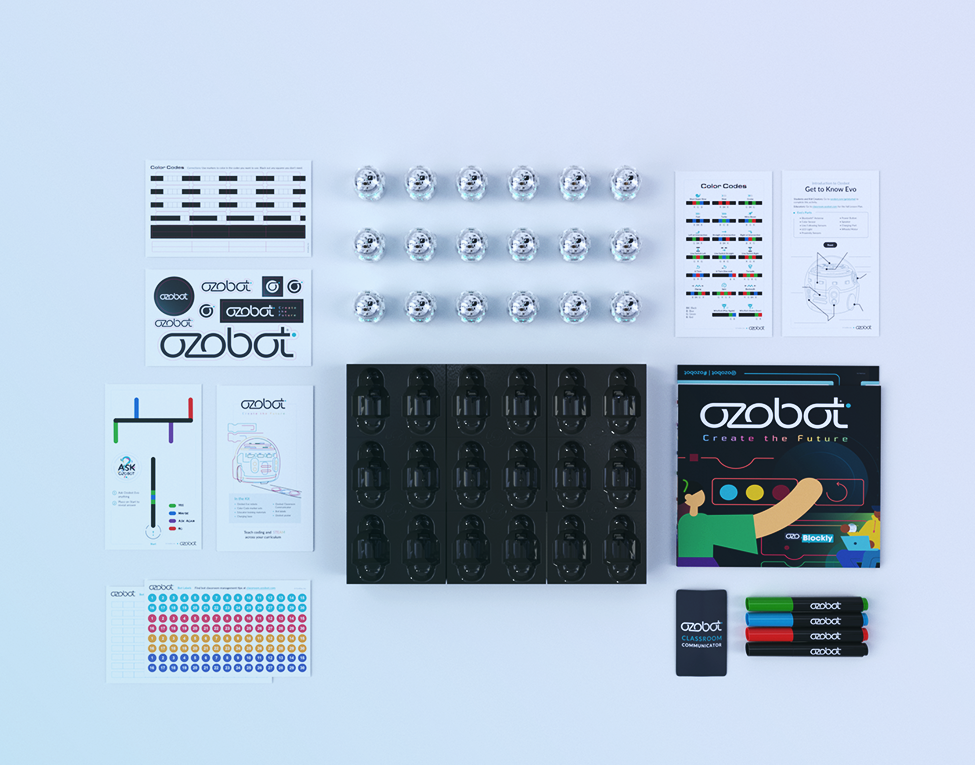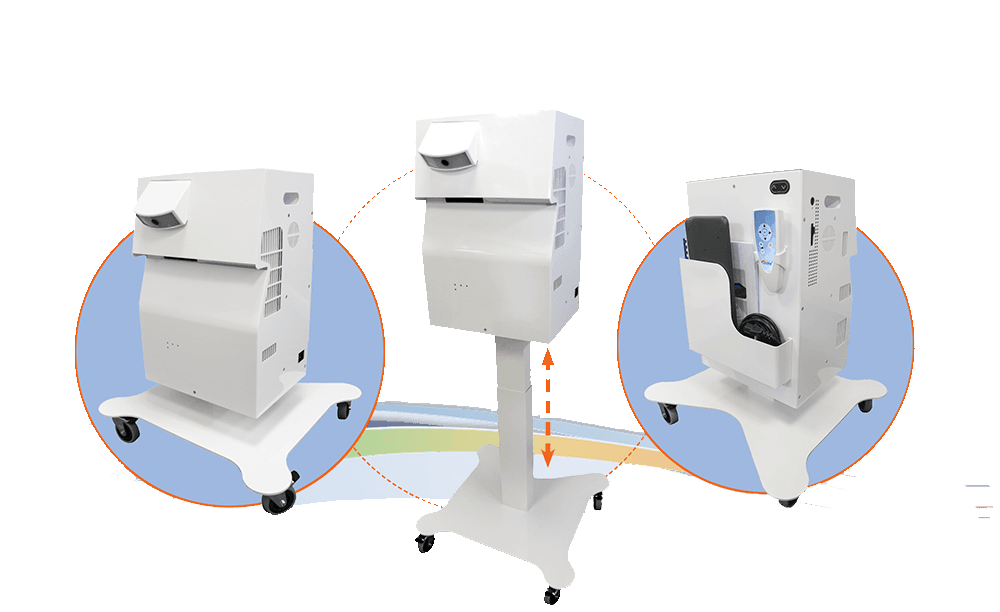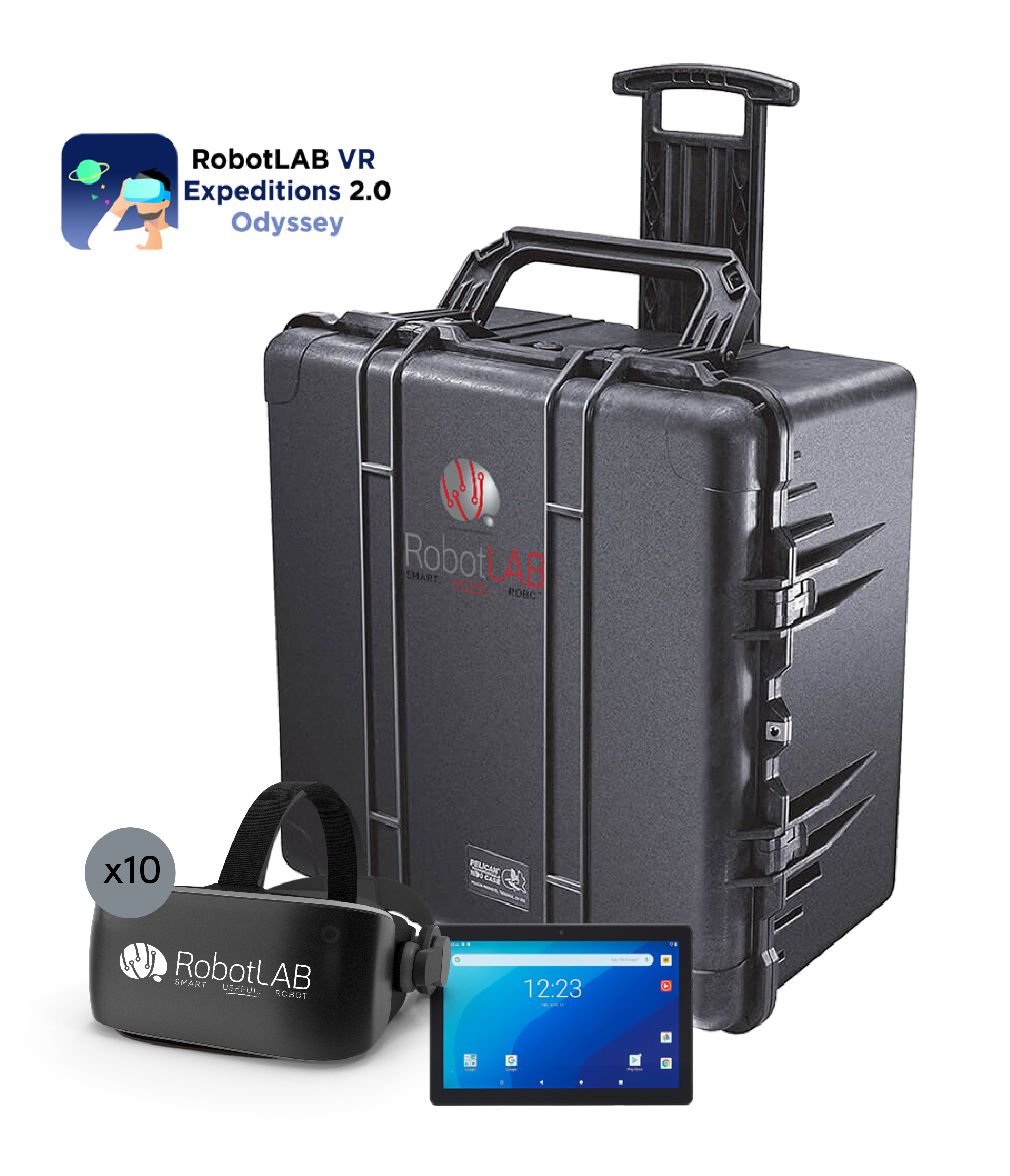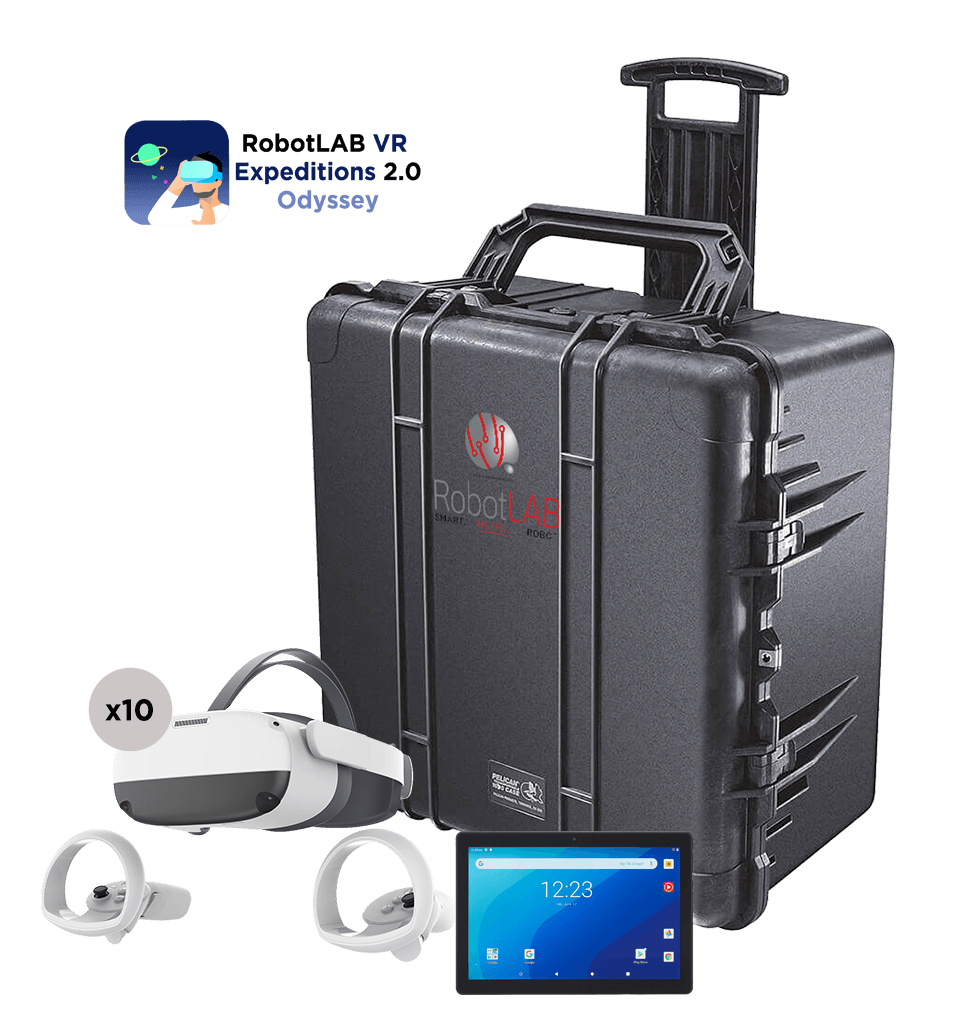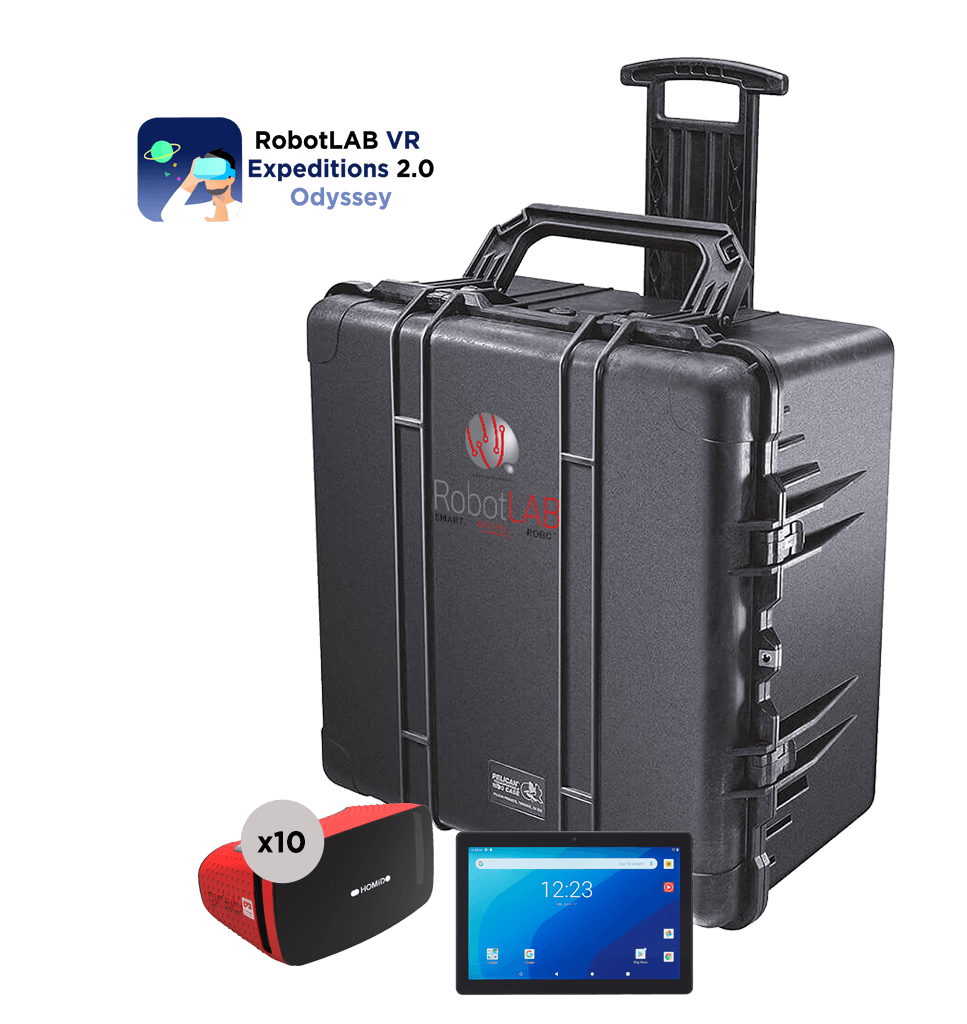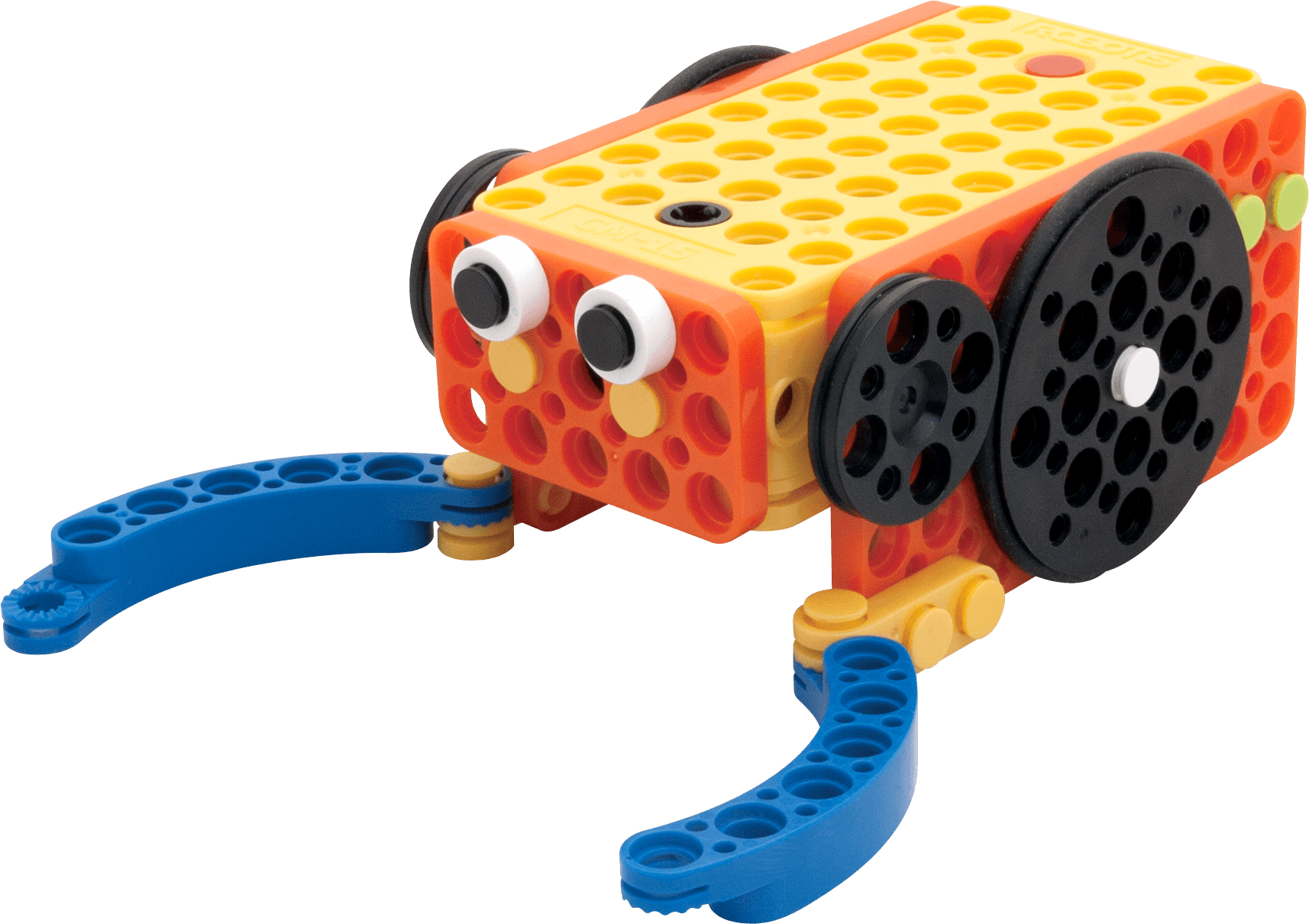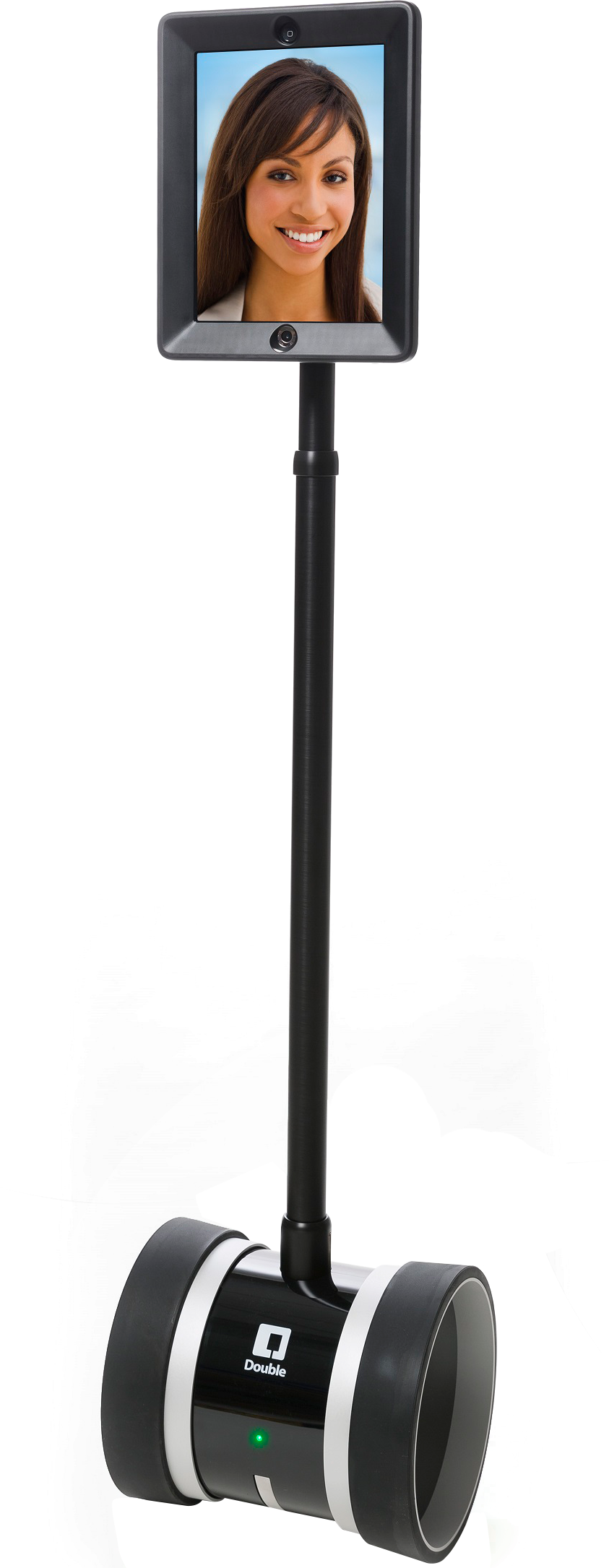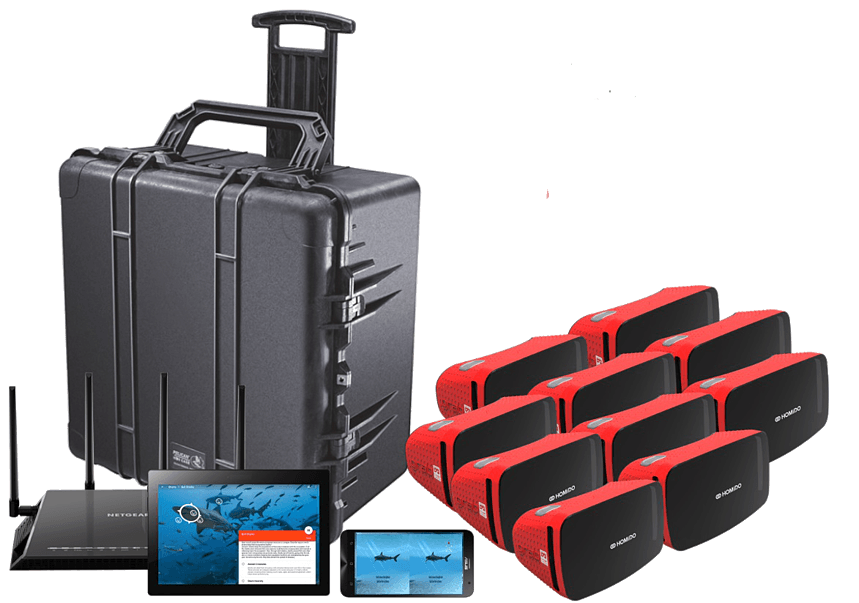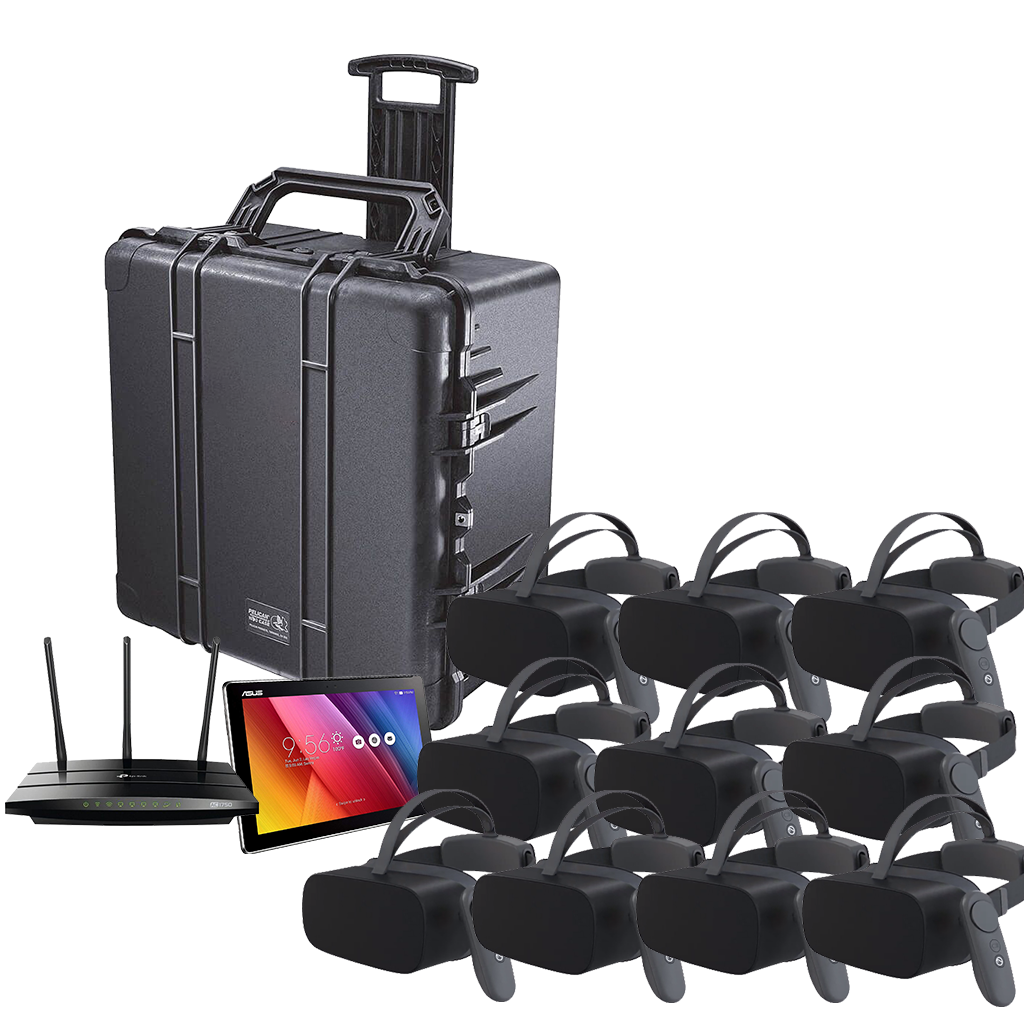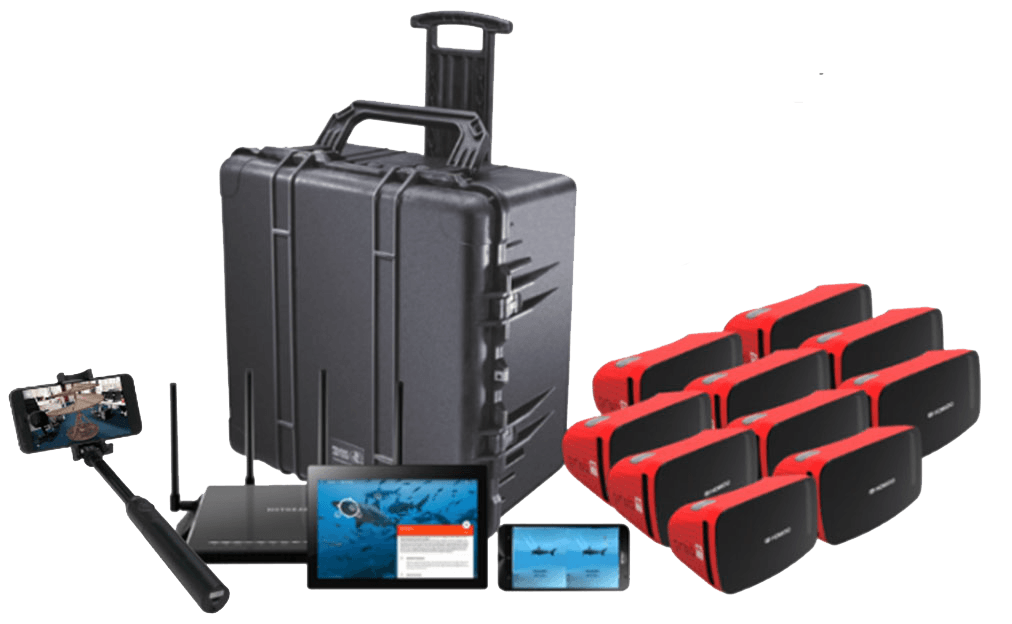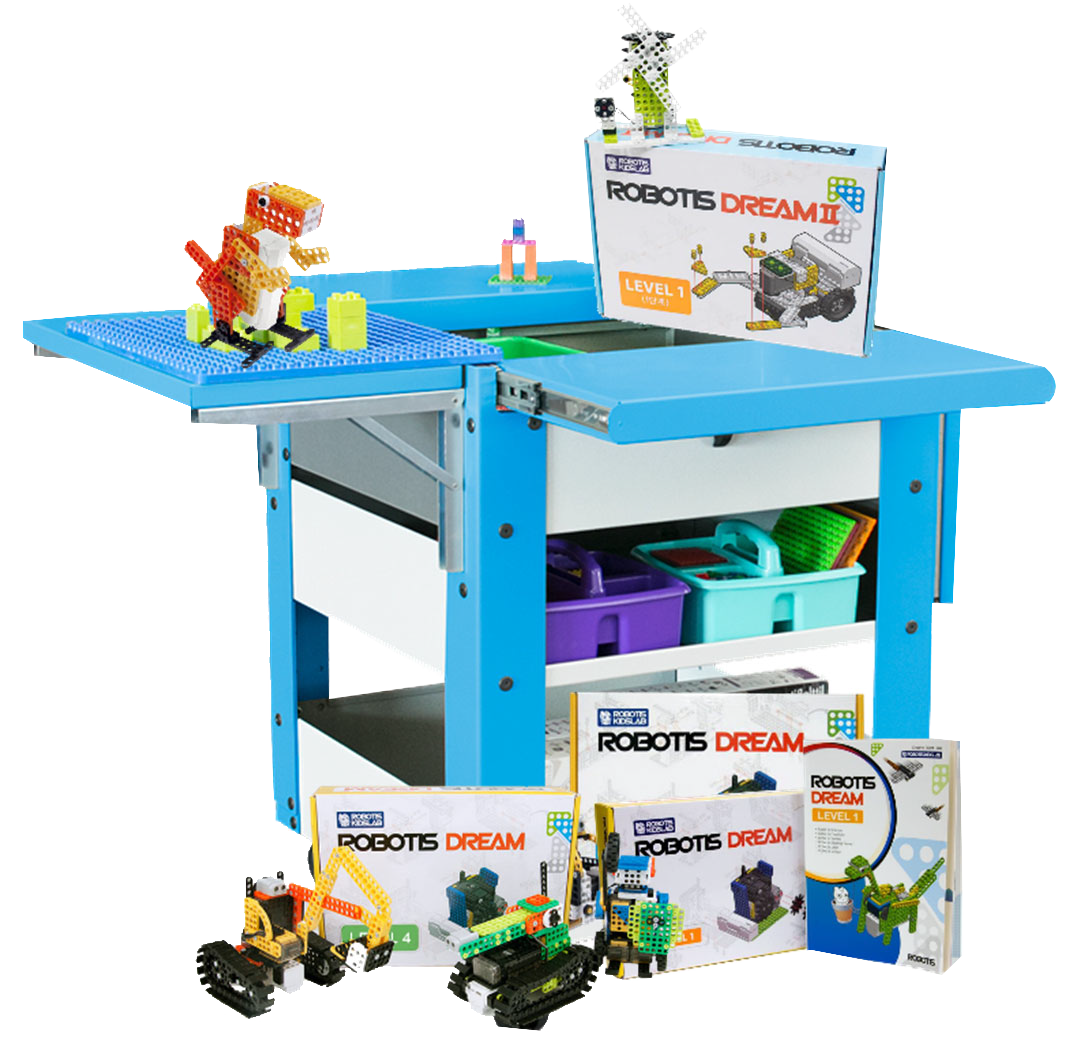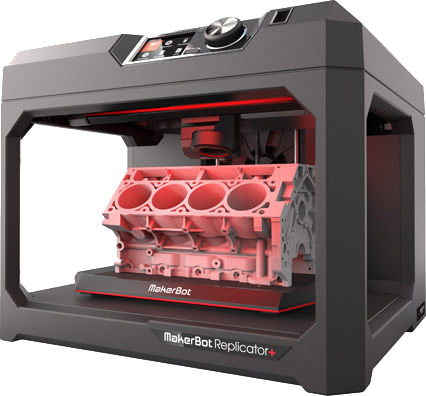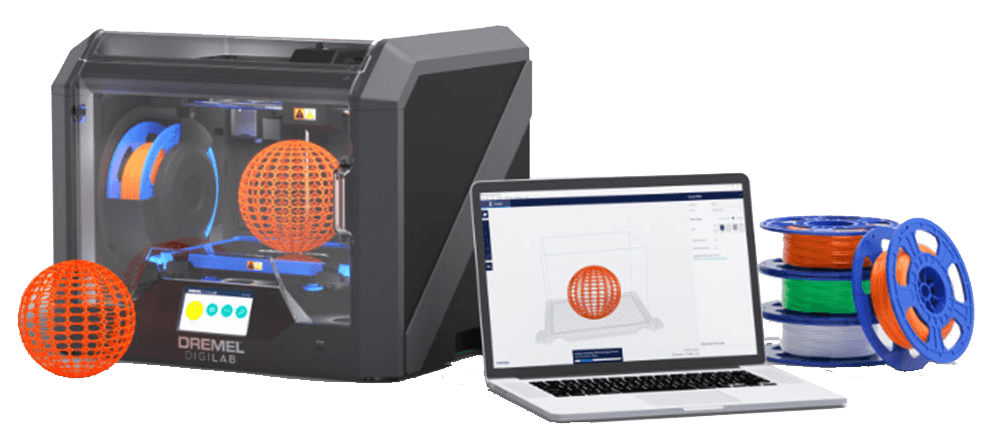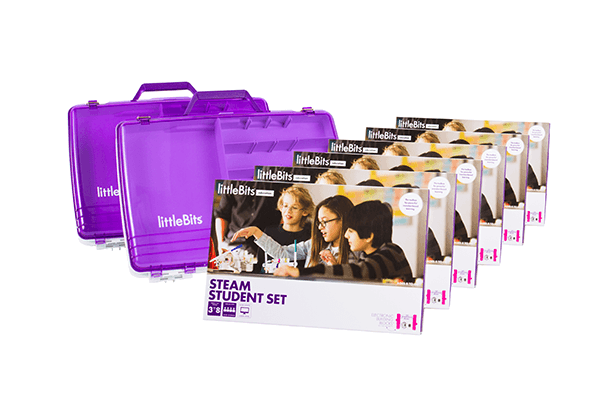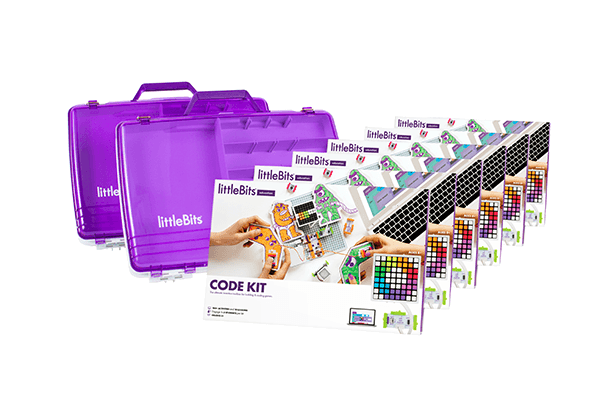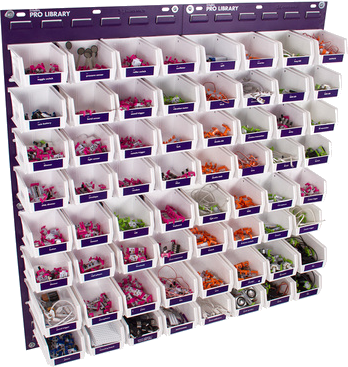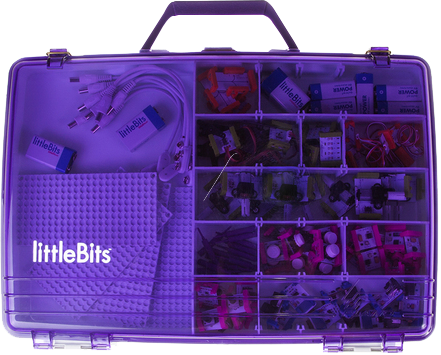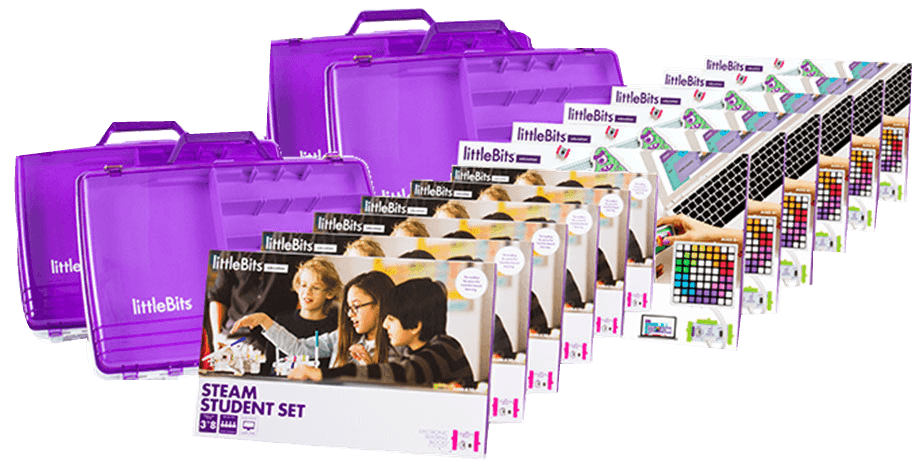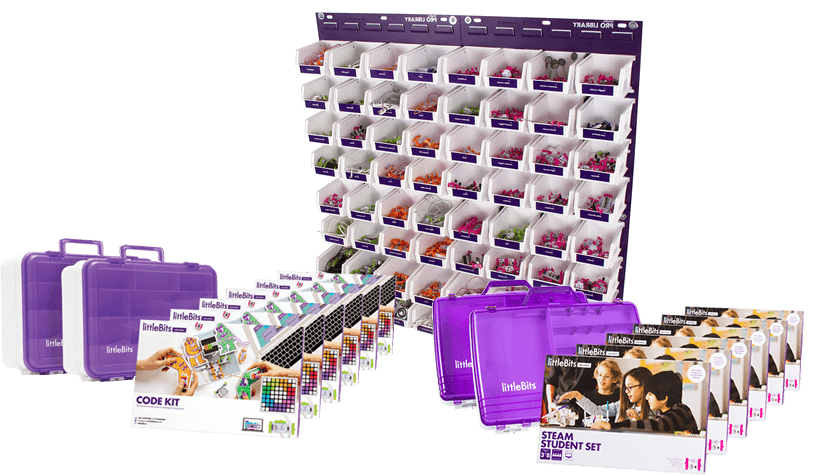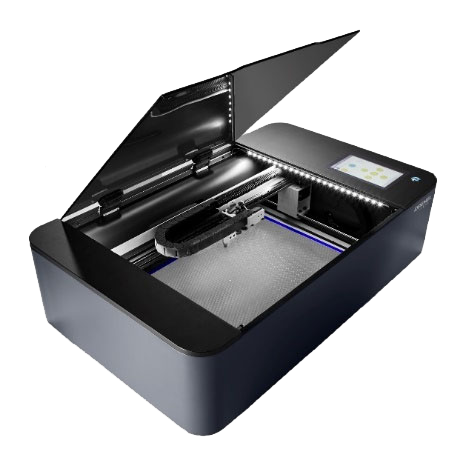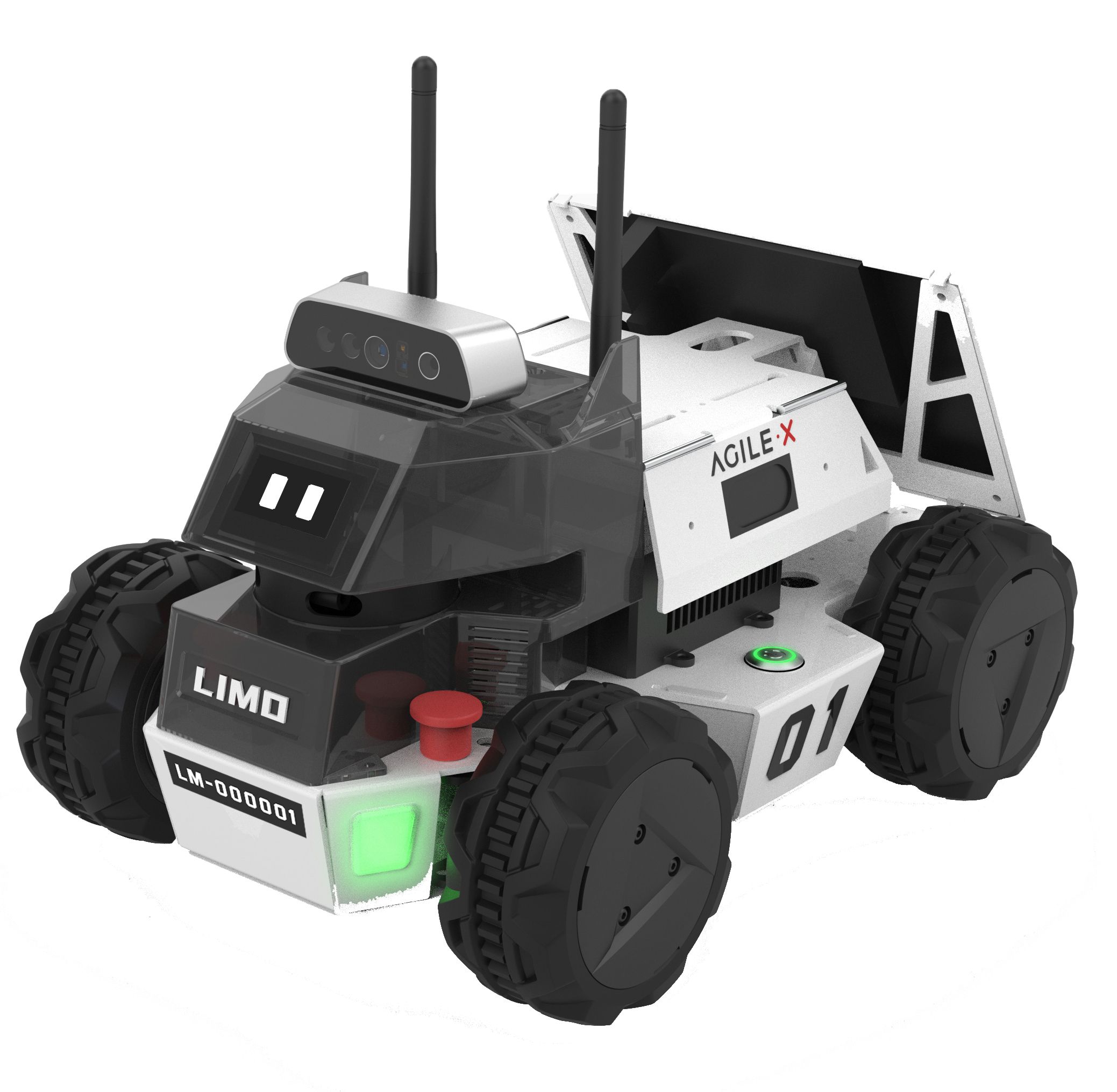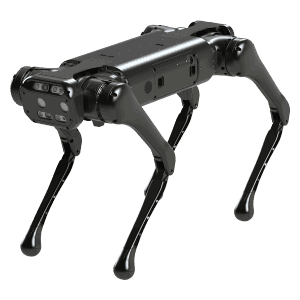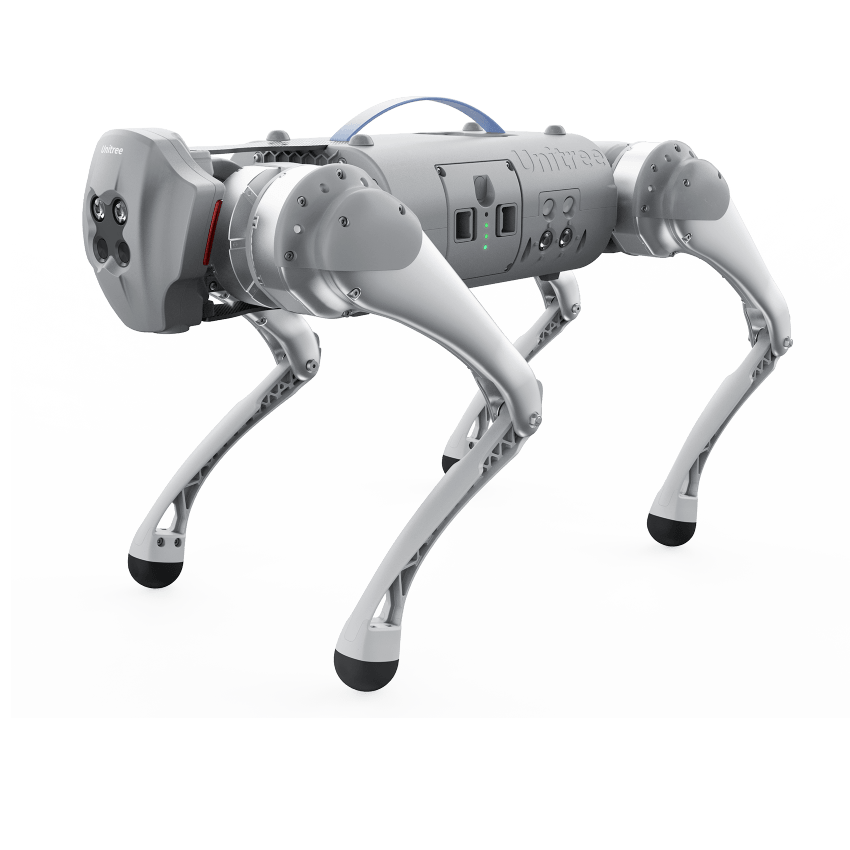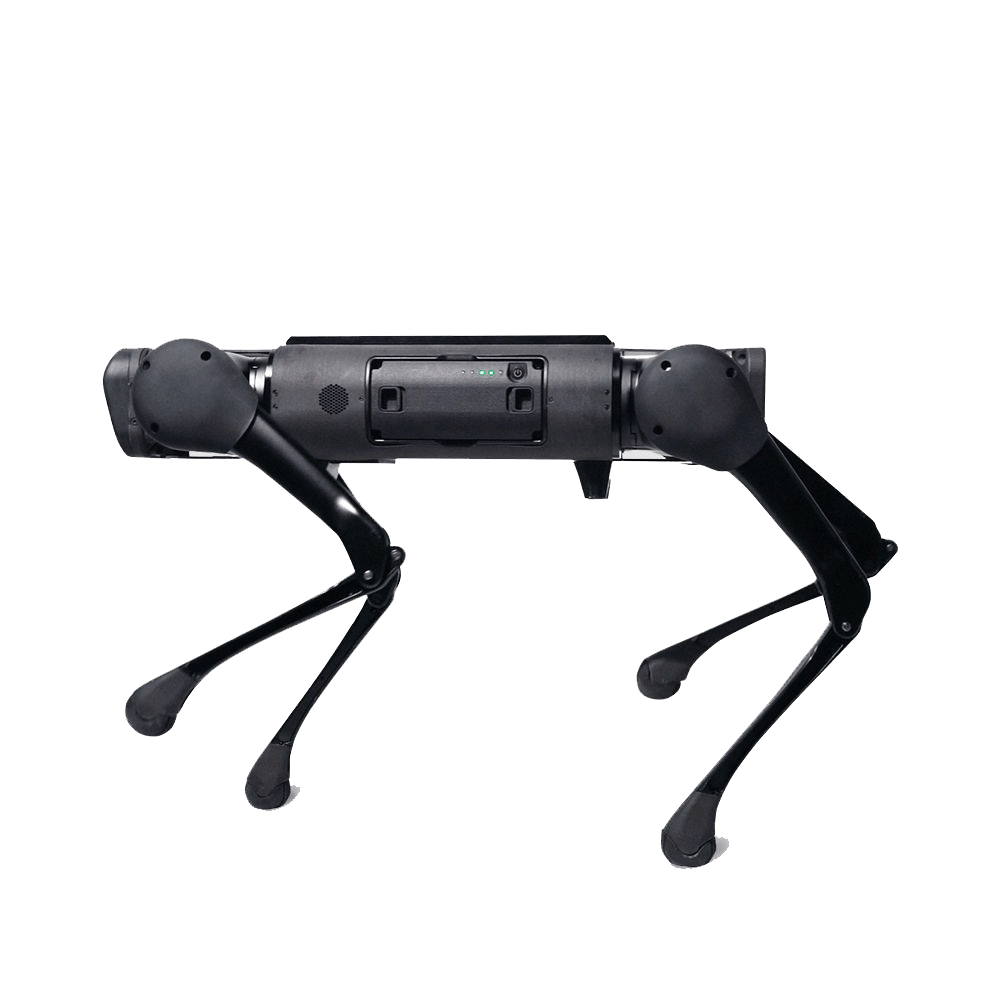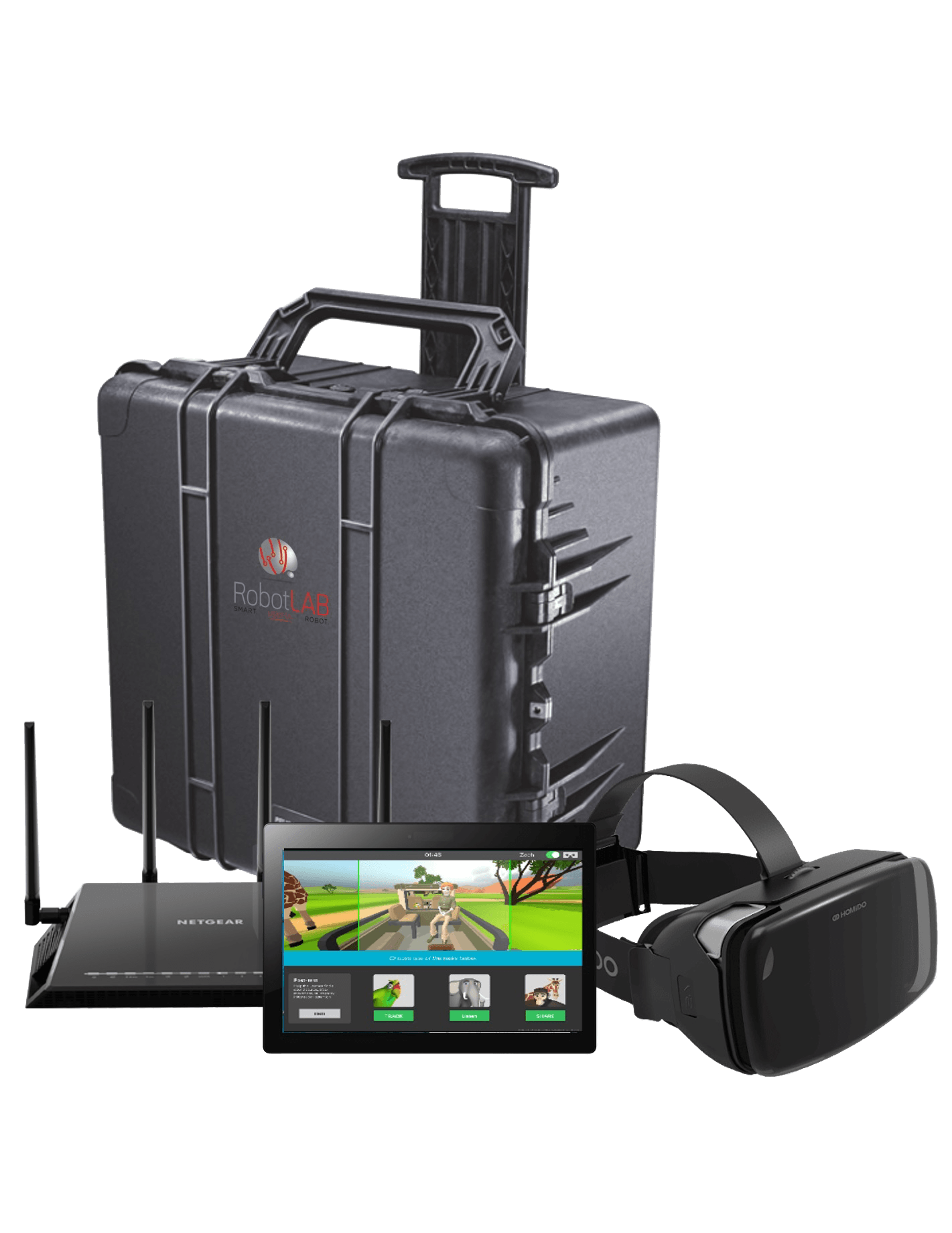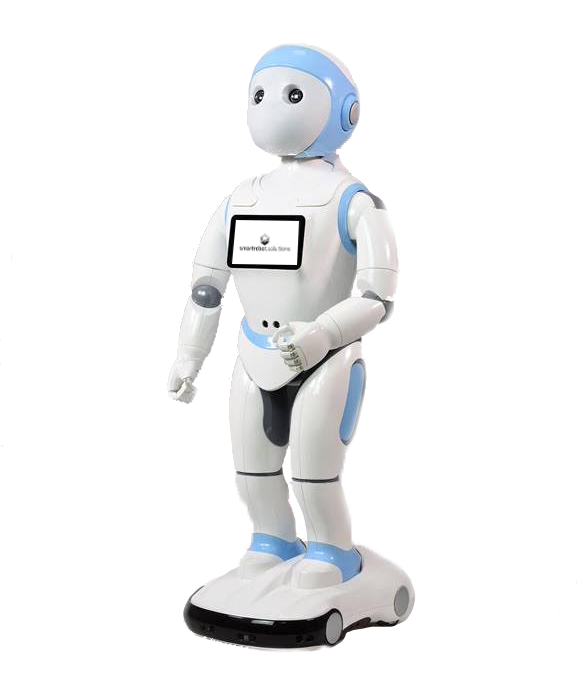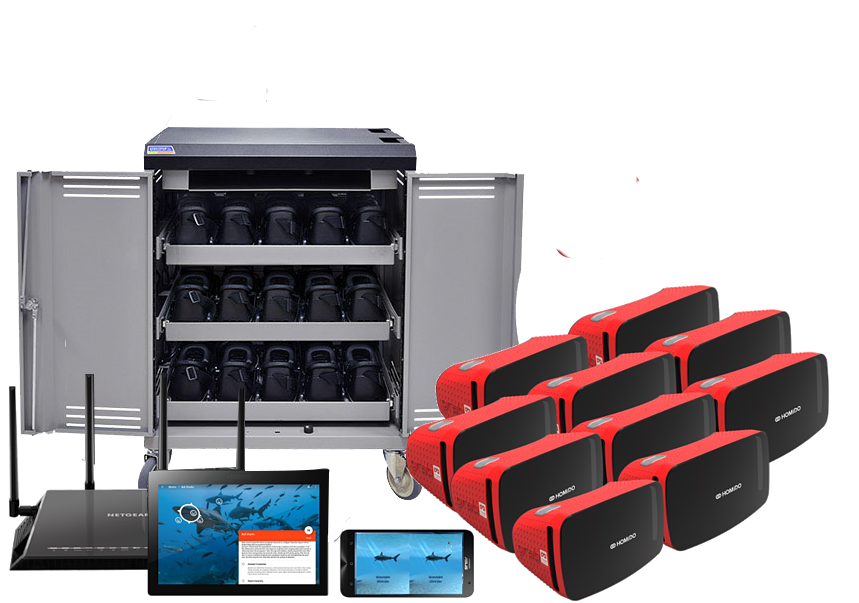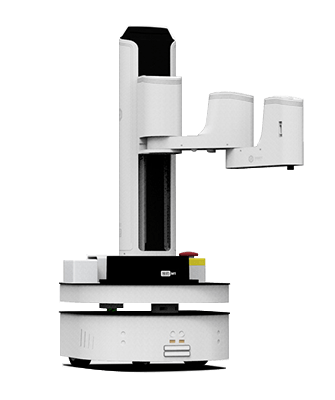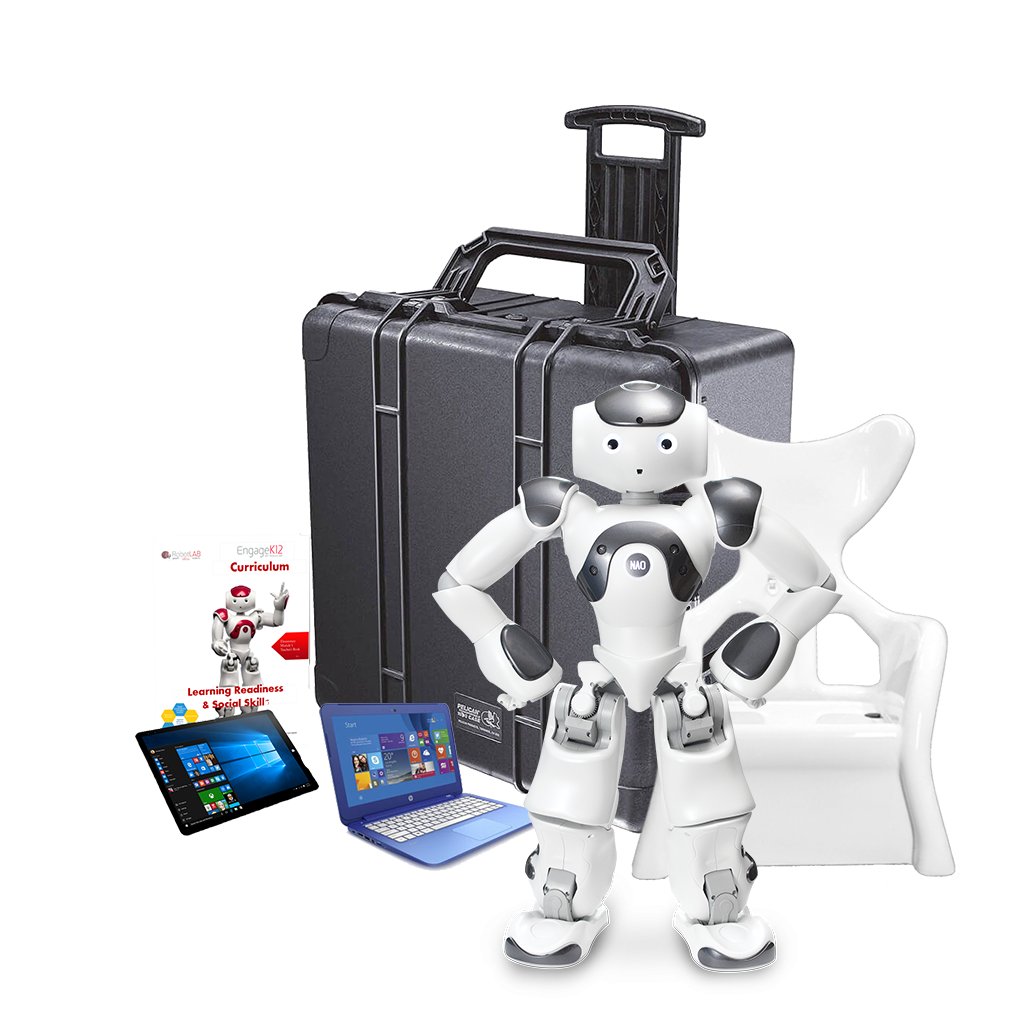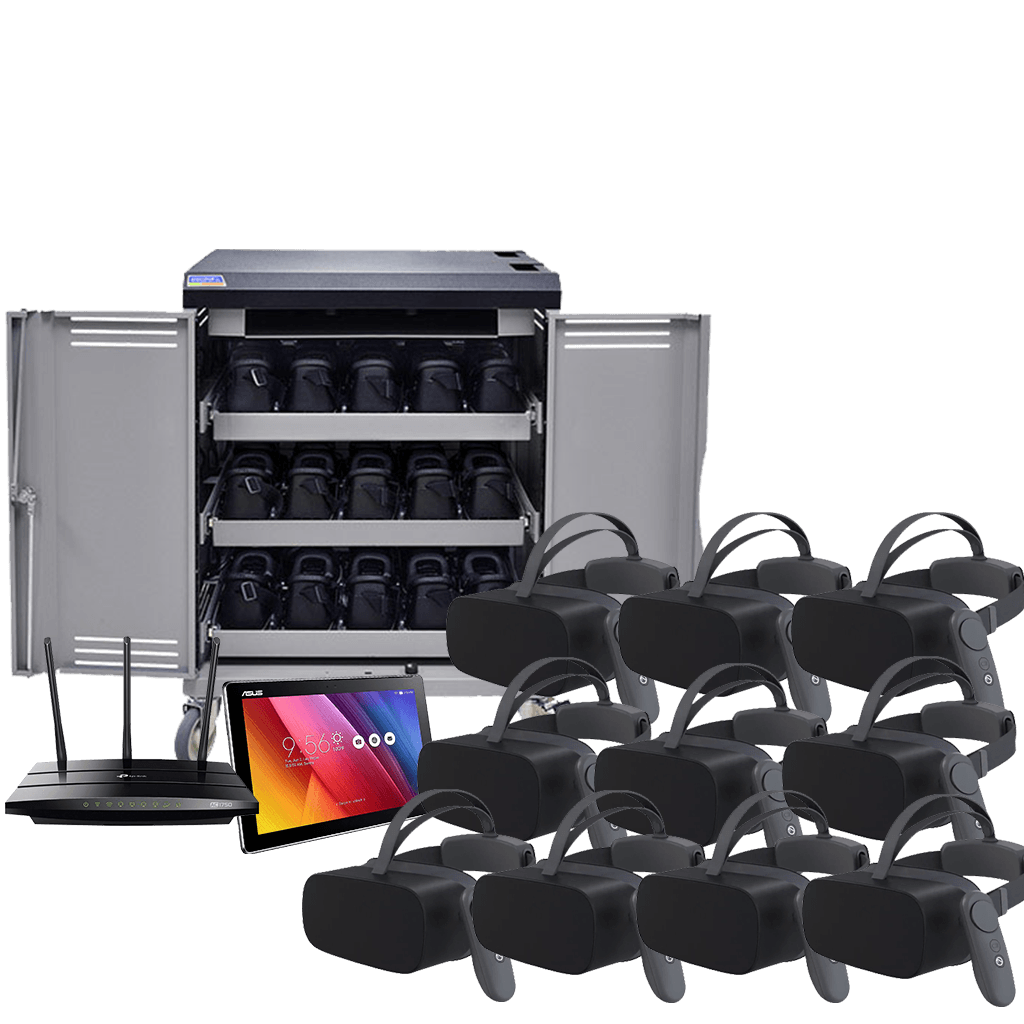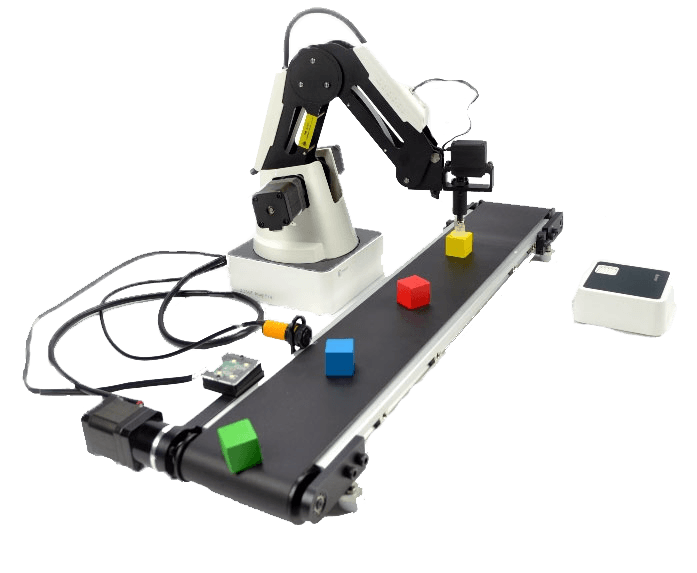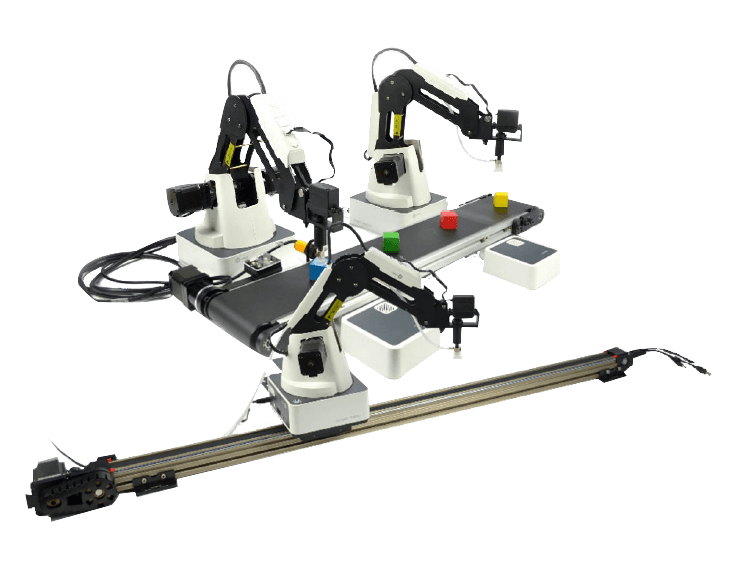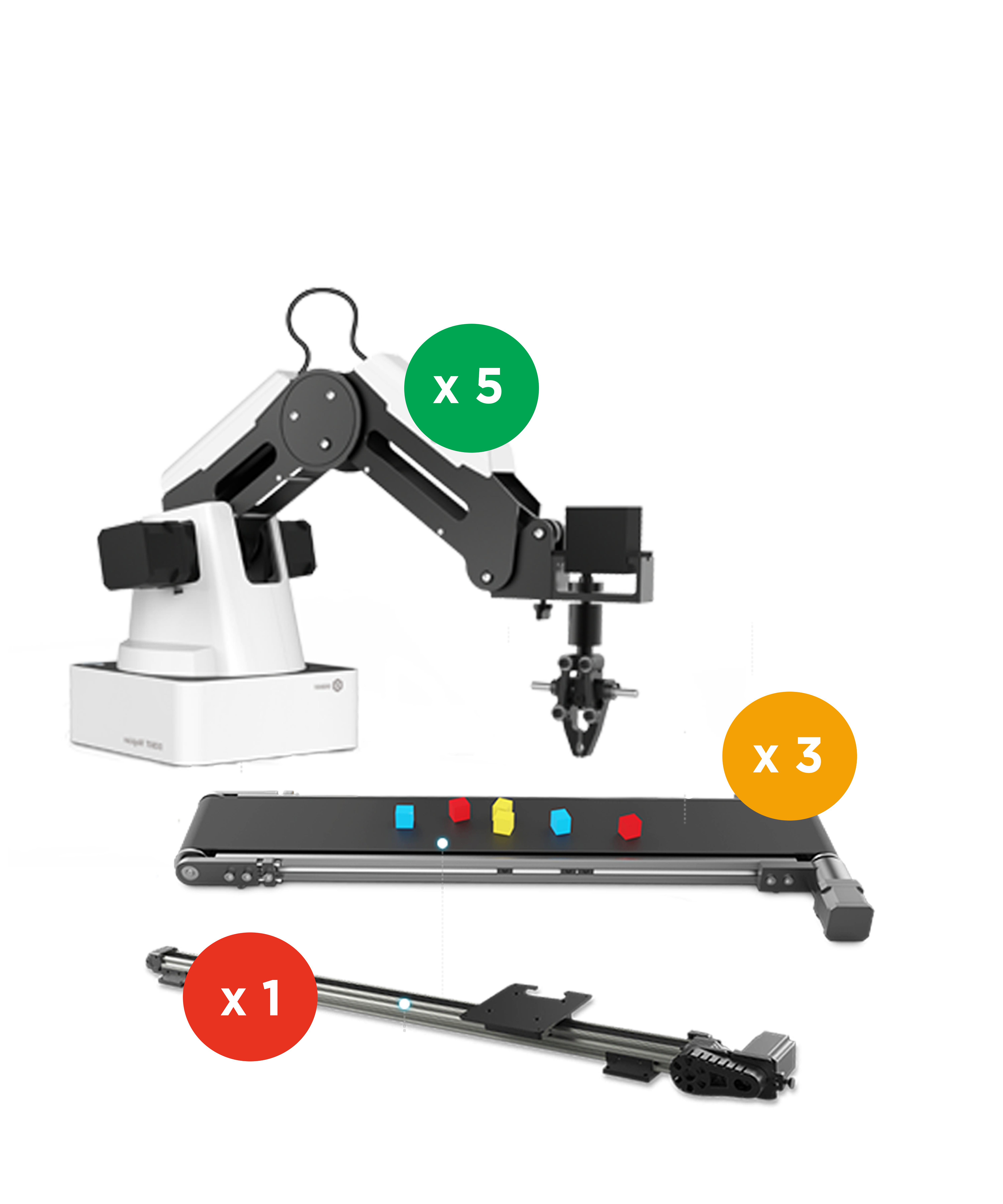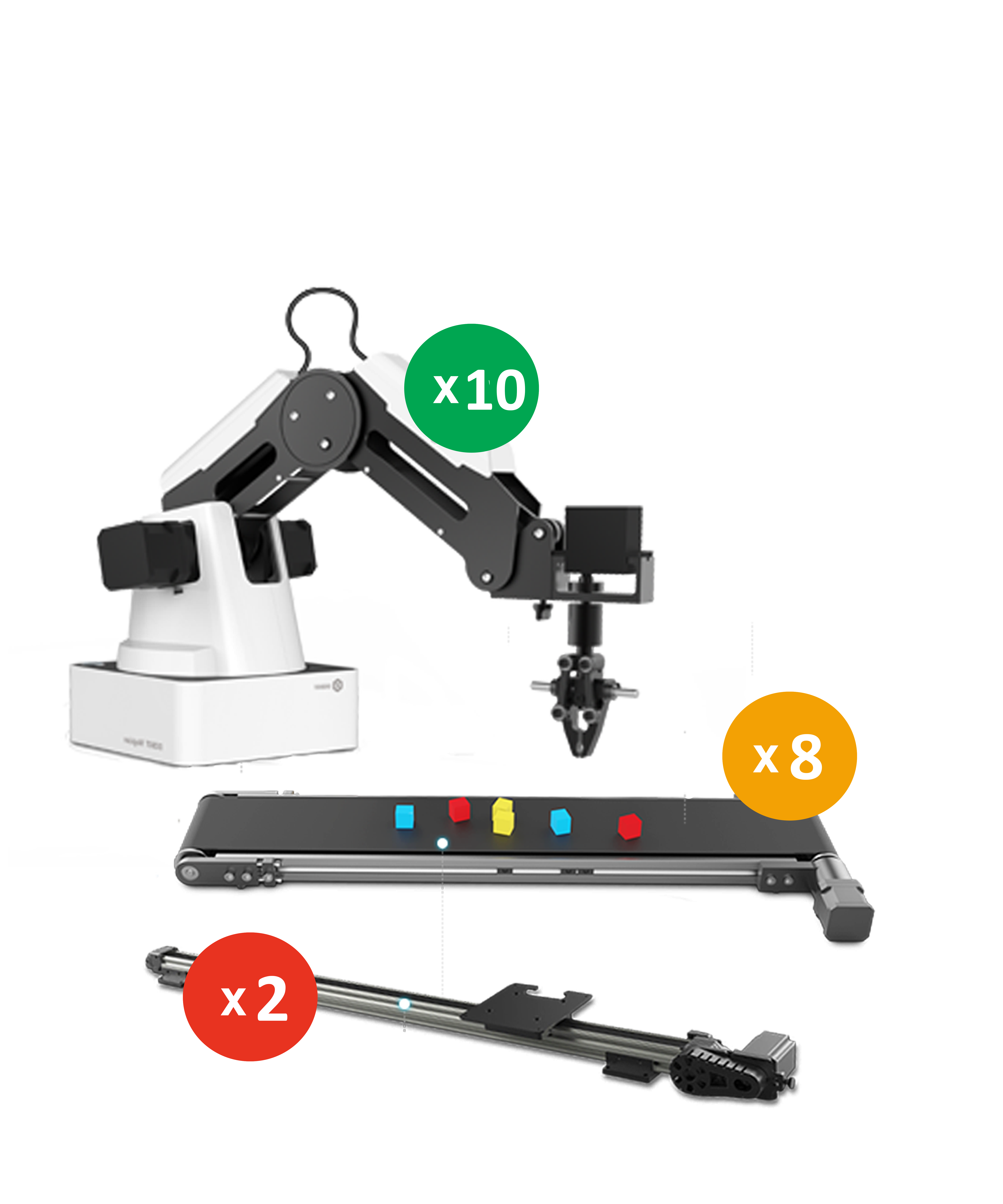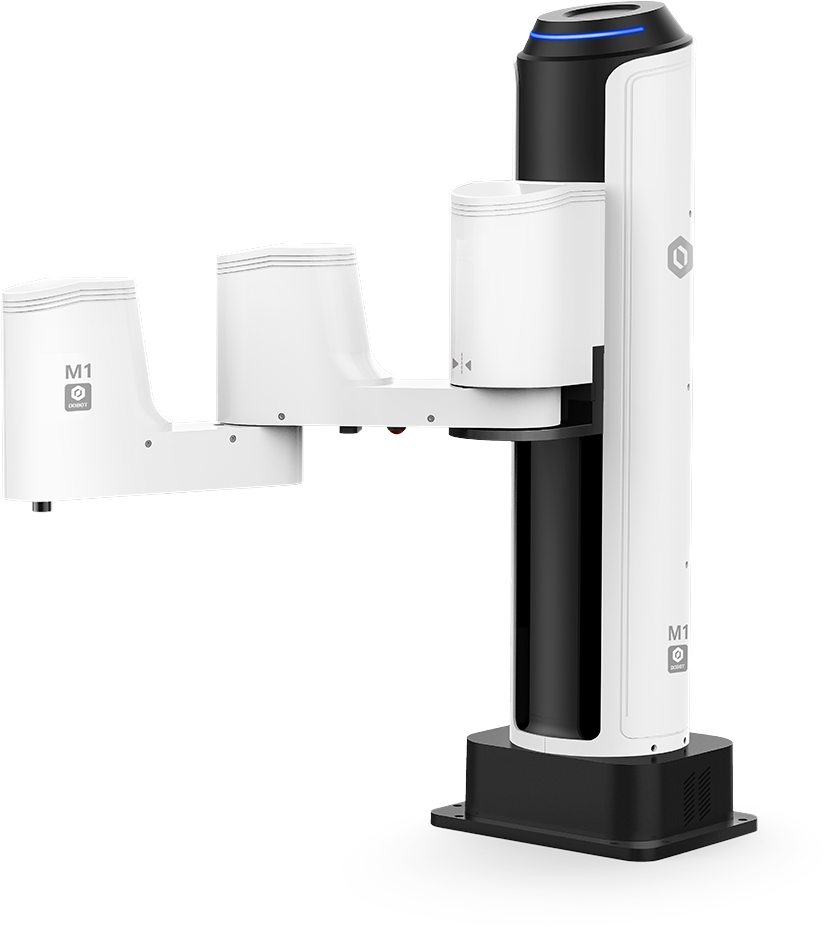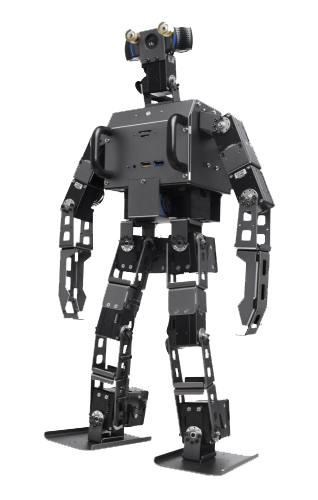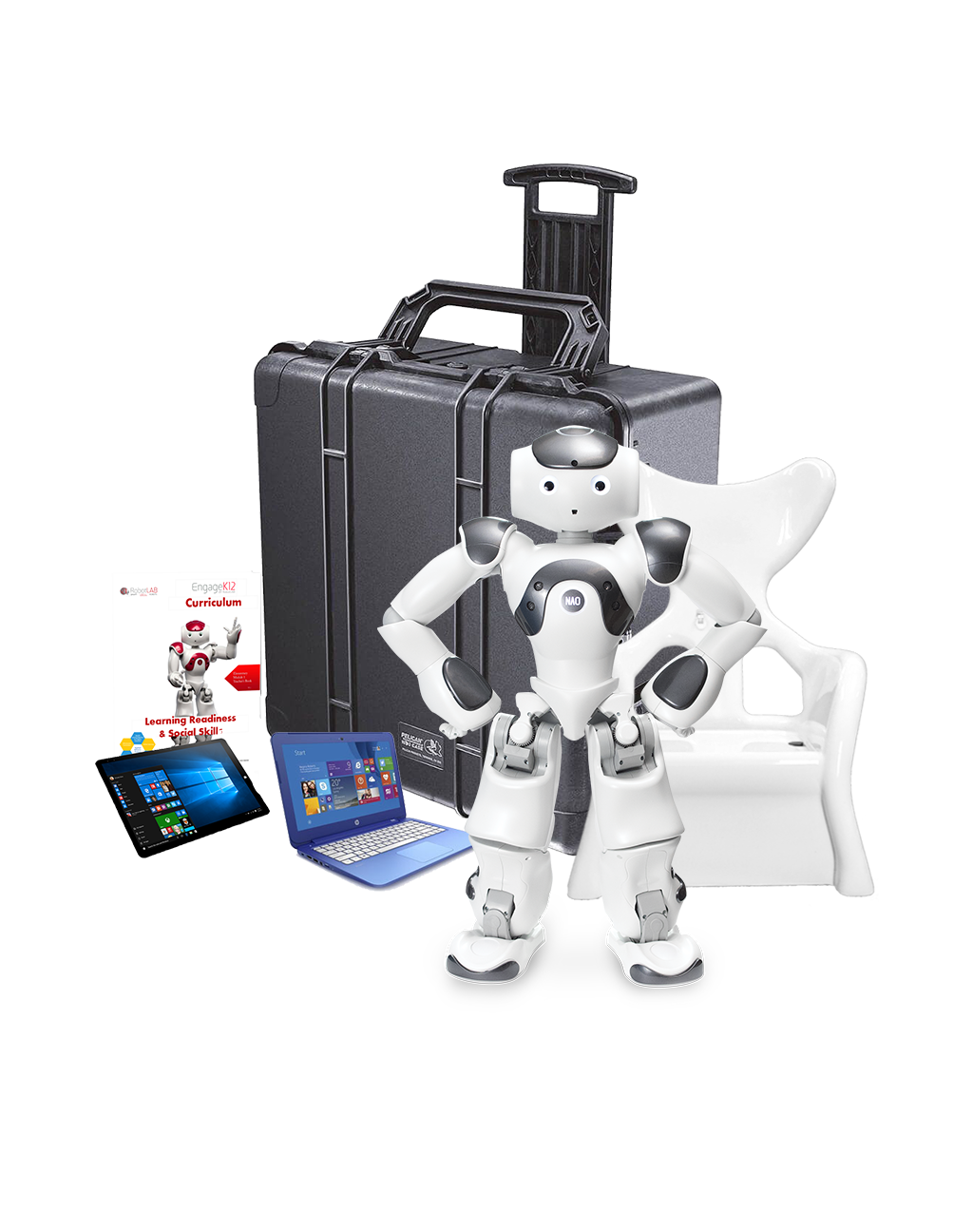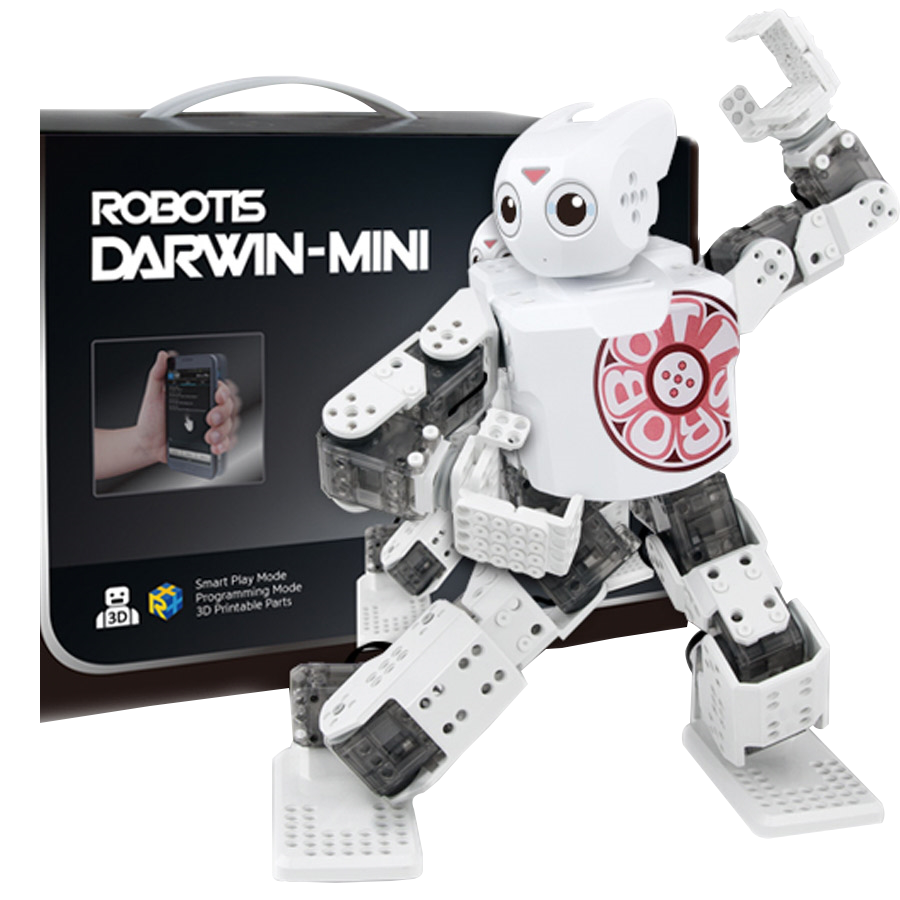RobotLAB Elementary Robotics Camp
DIY Robots
The Elementary Robotics Summer Camp is a perfect introduction to Robotics for Students in Grades 3-8.
The bundle is made of 10 Robotic Kits that include in total:
- 10 Main Controllers
- 10 Remote Controllers
- 10 Remote Signal Receivers
- 30 IR-Photo TR Sensors
- 20 DC Motors & 40 DC Motor Shafts
- 200 Bricks
- 660 Frames
- 260 Axis & 300 Bushings
- 40 Gears, 40 Wheels & 40 Rubber Shoes
- 340 Decoration Sheets
- 80 Spacers, 100 Locking Nuts, 500 Bolts and 300 Nuts
- 20 Tools
- 10 Toolboxes
- 1 Digital Curriculum (unlimited downloads)
- 1-year Warranty and RobotLAB Support
Price: $1,595
Starting from*In Stock
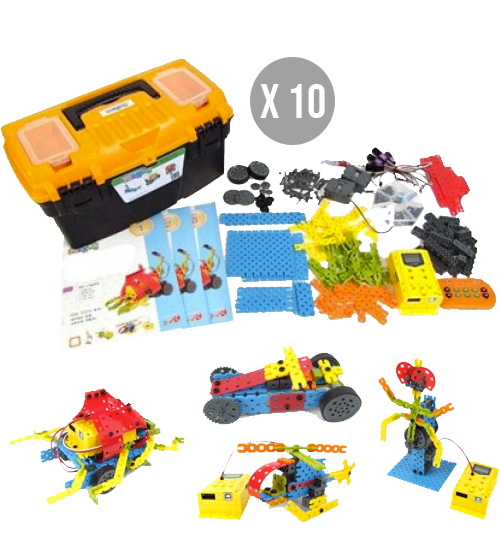
I NEED A PRICE QUOTE

Main Features
DIY robot kit for students ages 9 to 14

Educational value
Science, Electronics, Robotics

What’s in the box?
10 Robotic Kits (see description on the top)

Mobile / stationary
Stationary and Mobile robots

Autonomy
Remotely Controlled

Student to robot ratio
1 kit per 2 students (bundle designed for a total of 20 students)

Best for
Elementary & Middle Schools, Summer Camps, Libraries, Makerspaces

Grade Level
3 to 8th grade

Curriculum
Covering robotics and STEM

Professional Development / Training
No training required

Warranty
1-year warranty
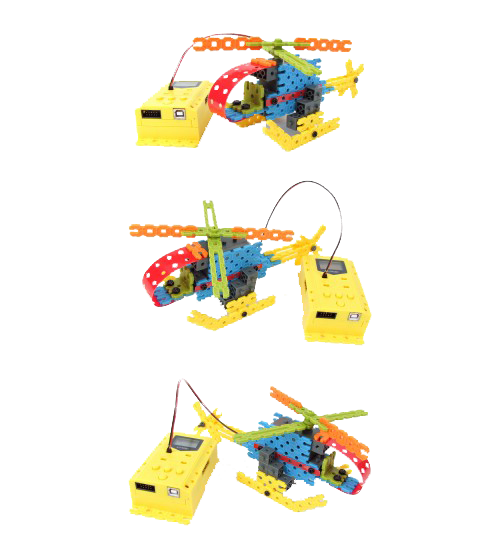
The Elementary Robotics Summer Camp is a perfect introduction to robotics for students in Grades 3-8. Students will learn scientific principles as they build over 40 robots including a Dragonfly, a Spider, a Surfer, a Bell, a Water Mill, an Airplane, a Fox, a Giraffe, an Elephant, a Fencer, a Goalkeeper, a Skater, a Skier, a Striker, a Swimmer, a Tennis Player, a Weight Lifter, a Rocking Chair, a Windmill, a Boat, an Helicopter, a Bicycle, an Airplane, a Motorcycle, a See-Saw, a Viking, a Catapult, a Car, a
Achieve an understanding of the framework structure when manufacturing basic models such as common block products


You can create a model using an engine
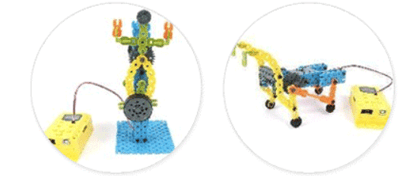
You can create a model using two motors, sensors, and a remote control
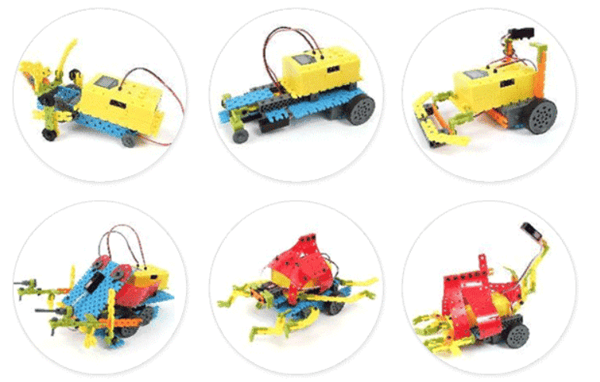
In addition to the models already mentioned, you can make 45 types of models with the beginner course set.
Main Controller (10 pcs)
- UP (User Programming Mode): programming using UCR-FCP software
|
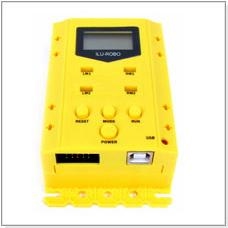 |
Remote Controller (10 pcs), Remote Signal Receiver (10 pcs), IR-Photo TR Sensor (30 pcs)
- 8 remote control communication channel
- Low battery display
- CR 2025 Battery Not Included
- Signal detection distance: Min. 7 ~ 10m
- Cable: Vcc (Red), Ground (Black), Signal (White)
- Detection distance: 1 ~ 3cm
- Cable: Vcc (Red), Ground (Black), Signal (White)
|
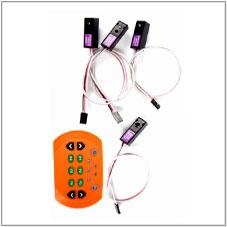 |
DC Motor (20 pcs), DC Motor Shaft (40 pcs)
- RPM: 175 ± 10% @ 10VDC
- Reduction gear ratio: 1/56
- 2 built-in DC Motor shaft holder
- Cable: Vcc (Red), Ground (Black)
- Material: POM
|
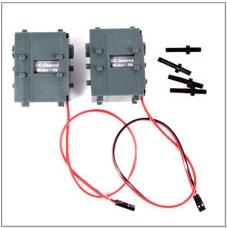 |
Brick (200 pcs)
- 1 unit-brick: 40 pcs
- 2 unit-brick: 40 pcs
- 3 unit-brick: 40 pcs
- 4 unit-brick: 40 pcs
- 5 unit-brick: 40 pcs
|
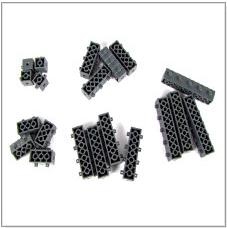 |
Frame (660 pcs)
- 1x2 frame: 40 pcs, 1x3 frame: 40 pcs, 1x5 frame: 40 pcs, 1x7 frame: 40 pcs
- 2x5 frame: 20 pcs, 2x7 frame: 20 pcs, 2x12 frame: 20 pcs, 8x9 frame: 20 pcs
- 3x3 right angle frame: 20 pcs, 1x6 bended frames: 20 pcs, 1x9 bended frames: 20 pcs
- 1x6 round frame: 20 pcs, 5x5 cross frame: 20 pcs, 2x3 T frame: 20 pcs
- 1x6 link frame: 20 pcs, 1x2 obtuse frames: 100 pcs, 1x2 right angle frame: 100 pcs
- 1x4 servo frame: 20 pcs, 1x5 servo frame: 20 pcs, 1x7 servo link frame: 20 pcs
- 1x5 servo bended frame: 20 pcs
|
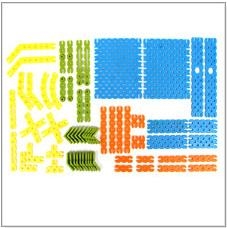 |
Axis (260 pcs), Bushing (300 pcs)
- 25mm axis: 100 pcs
- 25mm bushing axis: 80 pcs
- 50mm axis: 60 pcs
- 75mm axis: 20 pcs
- 1-hole bushing: 200 pcs
- 2-hole bushing: 40 pcs
- 3-hole bushing: 40 pcs
- Connect bushing: 20 pcs
|
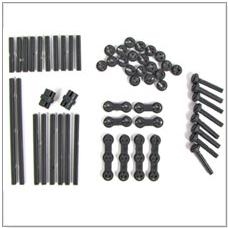 |
Gear (40 pcs), Wheel (40 pcs), Rubber Shoe (40 pcs)
- Large gear (30 teeth): 20 pcs
- Small gear (10 teeth): 20 pcs
- Sub wheel (20 mm): 20 pcs
- Middle wheel (45 mm including tire): 20 pcs
- Rubber shoe (20 mm): 40 pcs
|
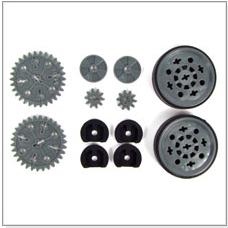 |
Decoration Sheet (340 pcs)
- 1x 6 sheets: 40 pcs, 1x13 sheets: 20 pcs
- 2x3 sheet: 20 pcs, 2x5 sheet: 20 pcs, 2x9 sheet: 20 pcs
- 3x3 sheet: 20 pcs, 3x5 sheet: 20 pcs, 3x11 sheet: 20 pcs
- Equilateral triangle sheet: 40 pcs
- 3x3 right triangle sheet: 40 pcs, 3x4 right triangle sheet: 40 pcs
- Semi-circle sheet: 40 pcs
|
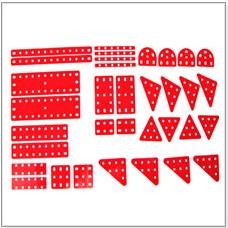 |
Spacer (80 pcs), Locking nut (100 pcs), Bolt (500 pcs), Nut (300 pcs)
- 3mm spacer: 40 pcs
- 6mm spacer: 40 pcs
- Locking nut: 100 pcs
- M4x8 bolt: 200 pcs
- M4x12 bolt: 200 pcs
- M4x10 link bolt: 100 pcs
- M4 nut: 300 pcs
|
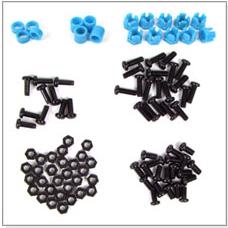 |
Tool (20 pcs), Toolbox (10 pc)
- Screw driver: 10
- Spanner: 10
- Plastic toolbox: 10
|
| Month: | Week: | Subject: | Study Contents: |
| 1 | 1 | Robot Definition | 1) What is |
| 2) What kind of parts are used in EQ-ROBO1 kit? | |||
| & | 3) Exercise |
||
| 4) Exercise |
|||
| Part list of EQ-ROBO1 | 5) Exercise |
||
| 2 | 1) Creative thinking | ||
| - Find the characteristics of object and Expression | |||
| & | 2) Exercise |
||
| - swimmer, tennis player, fencer, striker, goalkeeper, fencer, weight lifter | |||
| Expression | 3) Exercise |
||
| - bicycle, rocking chair, windmill, boat, helicopter, airplane, firearm, motorcycle | |||
| 3 | Science principle-I in life | 1) Machine Foundations-I | |
| - the center of gravity, leverage principles, link structure, friction, power transmission | |||
| 2) Exercise |
|||
| 3) Exercise |
|||
| 4) Bonus exercise |
|||
| 5) Bonus exercise |
|||
| 4 | Science principle-II in life | 1) Machine Foundations-II | |
| - elastic power | |||
| 2) Exercise |
|||
| 3) Exercise |
|||
| 4) Exercise |
|||
| 5) Bonus exercise |
|||
| 2 | 5 | Science principle-III in life | 1) Machine Foundations-III |
| - motor, gear, gear train, gear ratio, crank | |||
| 2) Exercise |
|||
| 3) Exercise |
|||
| 4) Exercise |
|||
| 5) Bonus exercise |
|||
| 6 | Science principle-IV in life | 1) Electronics Foundations-I | |
| - |
|||
| 2) Exercise |
|||
| 3) Exercise |
|||
| 4) Class robot |
|||
| 7 | Science principle-V in life | 1) Electronics Foundations-II | |
| - Infrared ray, Ir & Photo TR sensor | |||
| 2) Exercise |
|||
| 3) Bonus exercise |
|||
| 8 | Line |
1) Robot-I | |
| - Line tracing concept, operation principles |
|||
| 2) Exercise |
|||
| 3) Exercise |
|||
| 4) Class robot |
|||
| 3 | 9 | Science principle-VI in life | 1) Electronics Foundations-III |
| - Remote controller | |||
| 2) Exercise |
|||
| 3) Exercise |
|||
| 4) Exercise |
|||
| 5) Class robot |
|||
| 10 | Avoider | 1) Robot-II | |
| - Obstacle avoiding concept, operation principles |
|||
| 2) Exercise |
|||
| 3) Exercise |
|||
| 4) Class robot |
|||
| 11 | Battle robot | 1) Robot-III | |
| - Understanding the conductors, insulators, semiconductors | |||
| 2) Exercise |
|||
| 3) Class robot competition | |||
| - 1:1 battle competition (sumo wrestling) | |||
| - 2:2 battle competition (bursting the balloon) | |||
| 12 | Soccer robot | 1) Robot-IV | |
| - Understanding the electric current, voltage |
|||
| 2) Exercise |
|||
| 3) Exercise |
|||
| 4) Class robot competition : 3:3 robot soccer game |
Available Documents
RobotLAB Elementary Robotics Camp
DIY Robots
Price: $1,595
Starting from*
I NEED A PRICE QUOTE
people who looked at this also looked at that
More Information About The Elementary Robotics Camp
-
I Need A Price QuoteBest Price Guaranteed
Frequently Asked Questions About The Elementary Robotics Camp
What computer/devices are required for the UCR Elementary Robotics Camp?
Read more on RobotLAB.com
Can the UCR Elementary Robotics Camp kit be used more than one time?
Read more on RobotLAB.com
How difficult is it to build items using the UCR Elementary Robotics Camp kit?
Read more on RobotLAB.com
Are Batteries included in the UCR Elementary Robotics Camp kits?
Read more on RobotLAB.com
RobotLAB Elementary Robotics Camp
DIY Robots
Price: $1,595
Starting from*
I NEED A PRICE QUOTE









